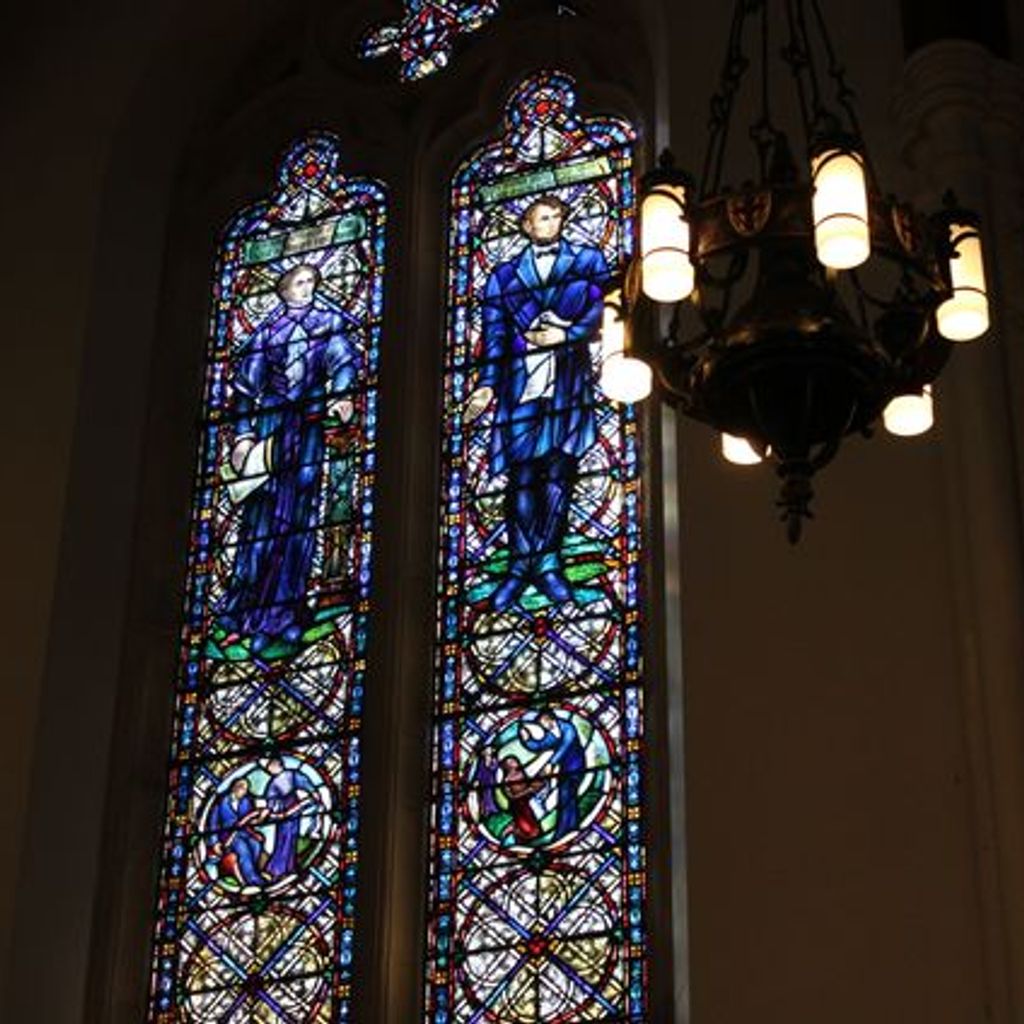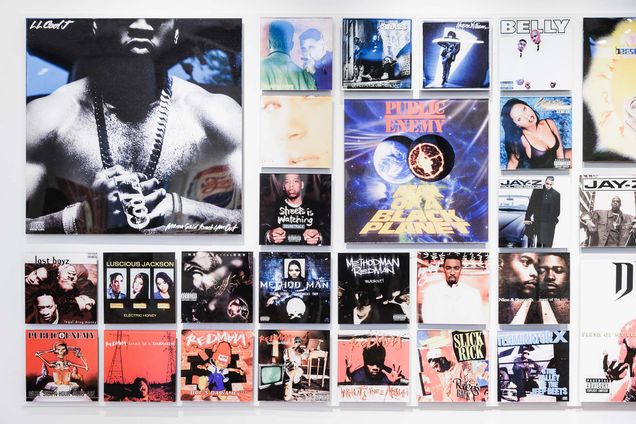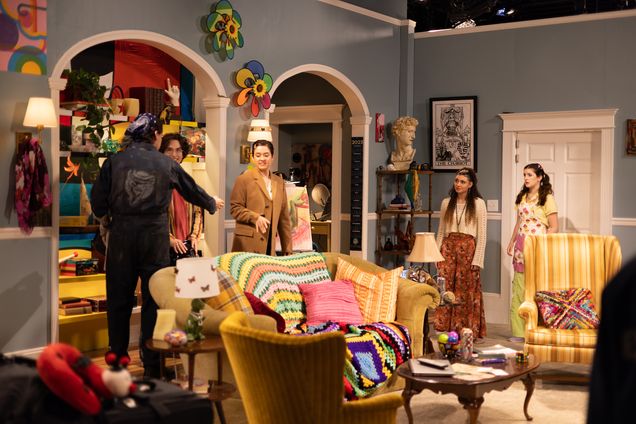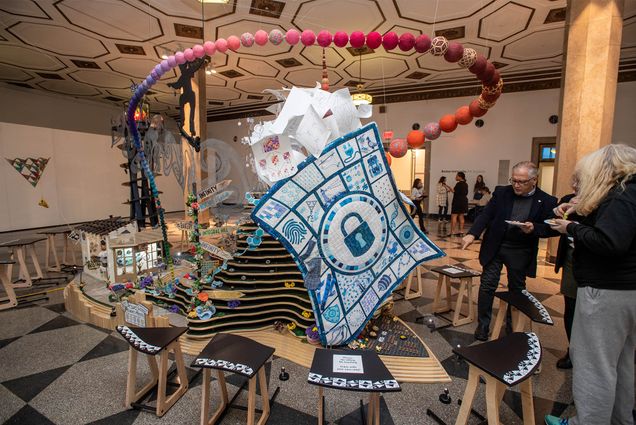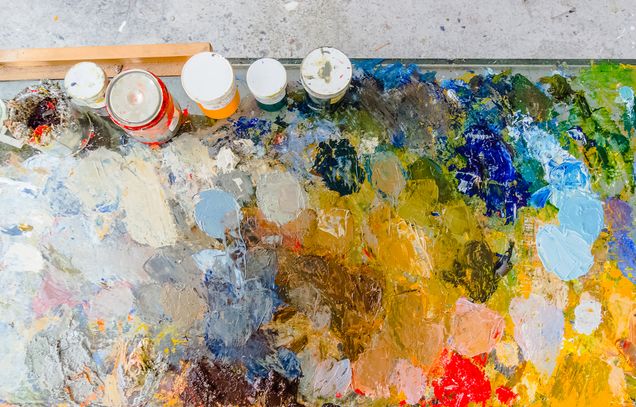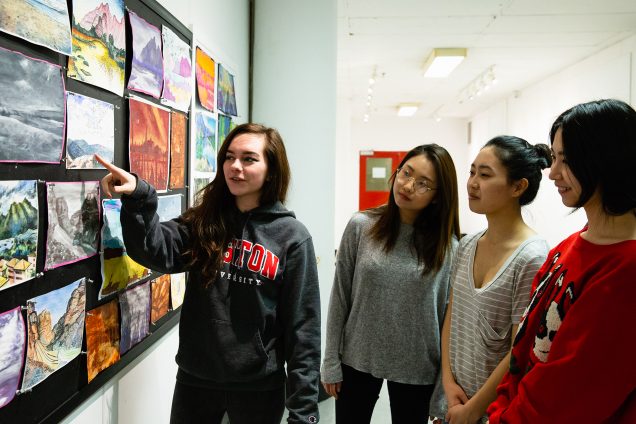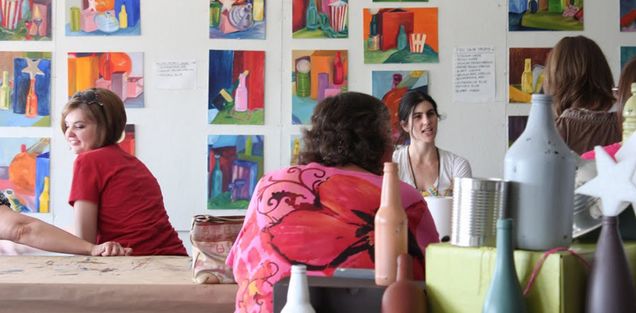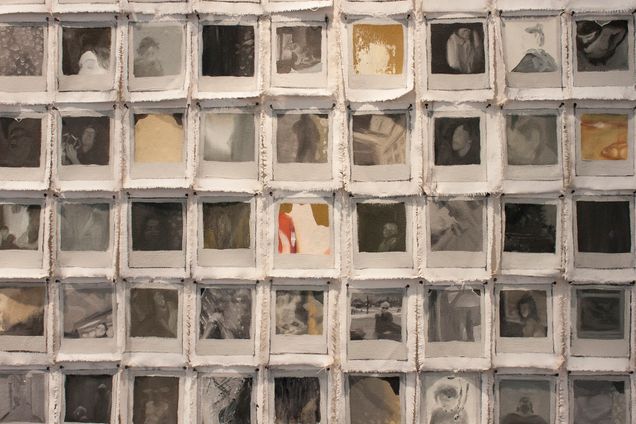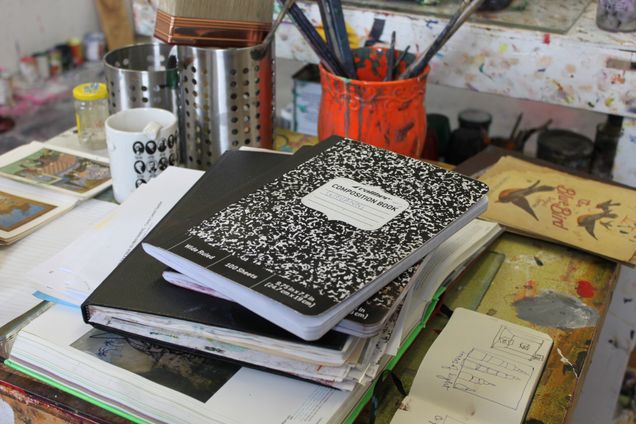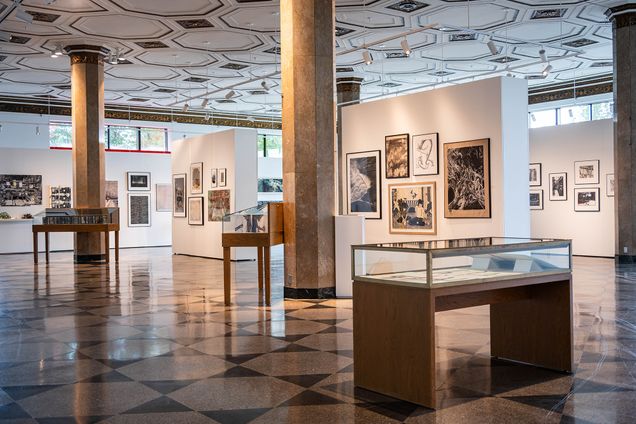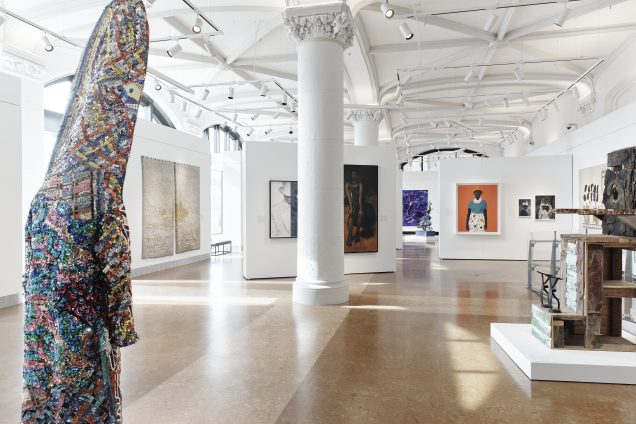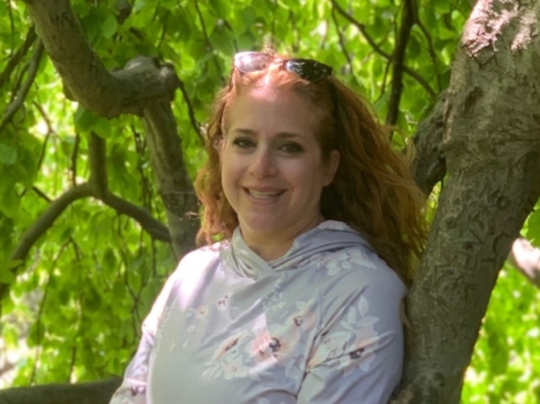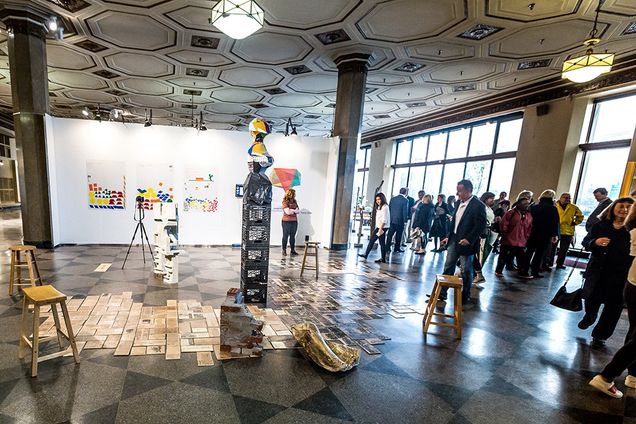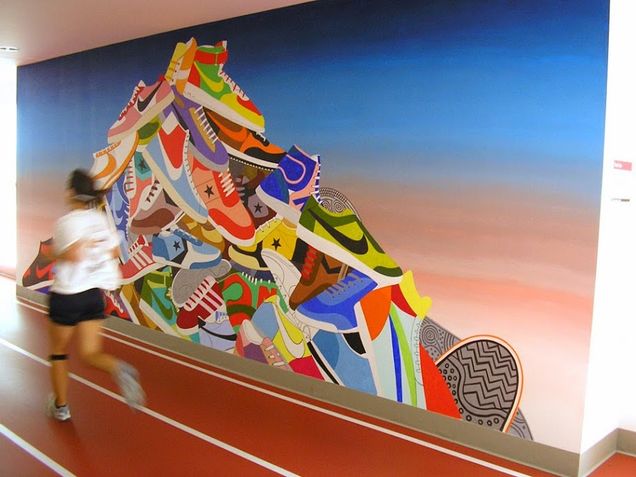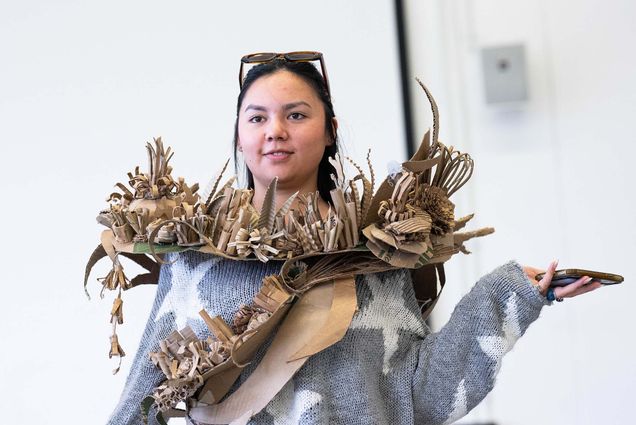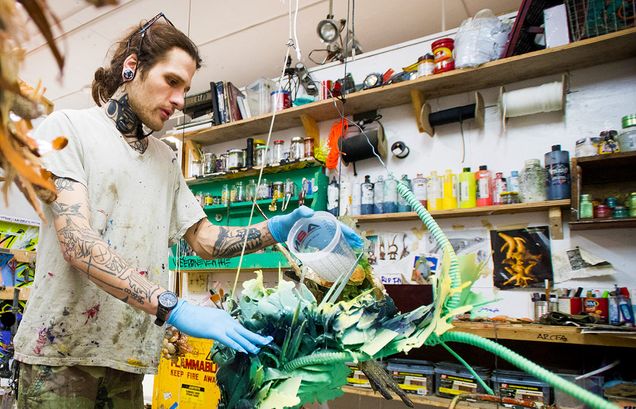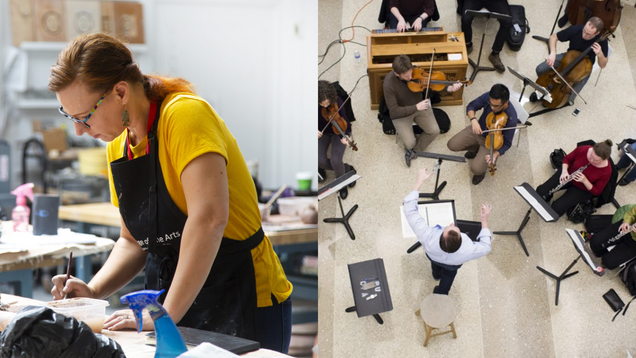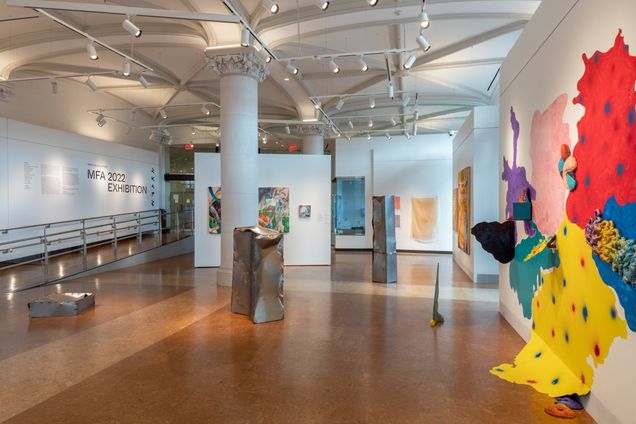Public Art at BU
More Like ThisArt on the Boston University Charles River and Medical Campuses
BU’s Permanent & Temporary Public Art Catalogue
Boston University’s Charles River and Medical campuses are home to dozens of sculptures, murals, and installations. Get to know the art you see on campus and the artists who created these pieces.
Boston University is proud to be the home of more than two dozen public art installations. Art is an integral part of the daily lives and well-worn pathways of students, faculty, staff, and Boston residents. New installations from Carson Fox and Virgil Oertle are in conversation with work from noted Chilean sculptor Sergio Castillo, BU alum Russell Jacques, mason Edward Monti, sculptor and photographer Gregg Lefevre, and many others.
This list includes only work that is located outside, or inside a first-floor entryway. If you believe we have missed work, or if you have information on work that we have not been able to identify, please contact us at artsinbu@bu.edu. Special thanks to Kimber Chewning, PhD Candidate, History of Art & Architecture for photography, research, and content. Permanent installation artists are listed below in alphabetical order. Temporary installations listed chronologically by date of install.
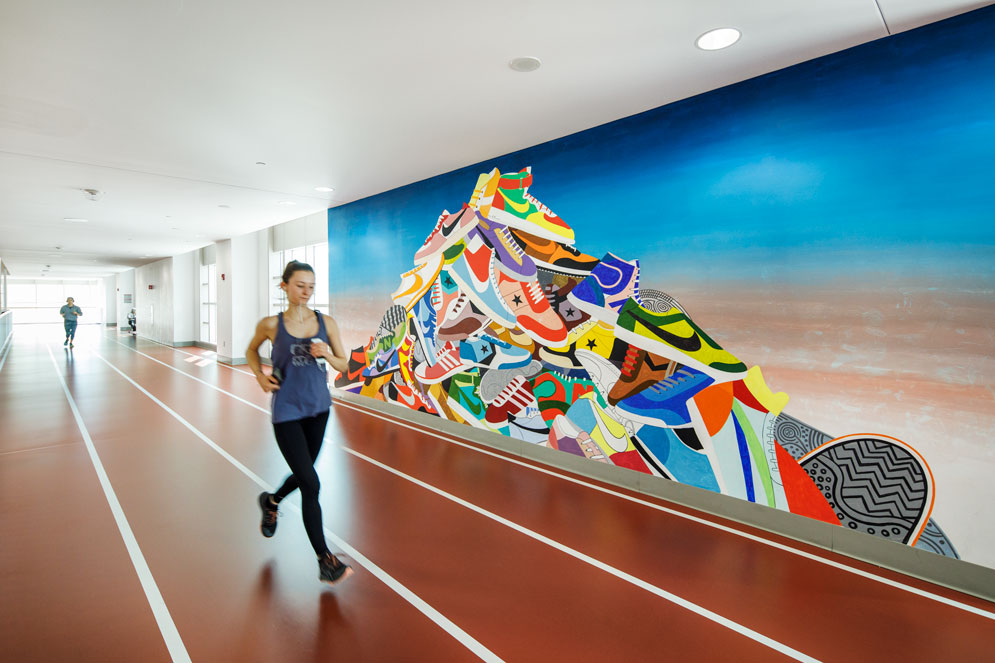
Art at the Heart of BU
Artists work with unexpected canvases throughout campus. CFA magazine took a closer look at some of them.
Art on the BU Campus
These works listed below can be found around Boston University’s Charles River Campus and Medical Campus. They are organized alphabetically by the artist’s last name
David Bakalar



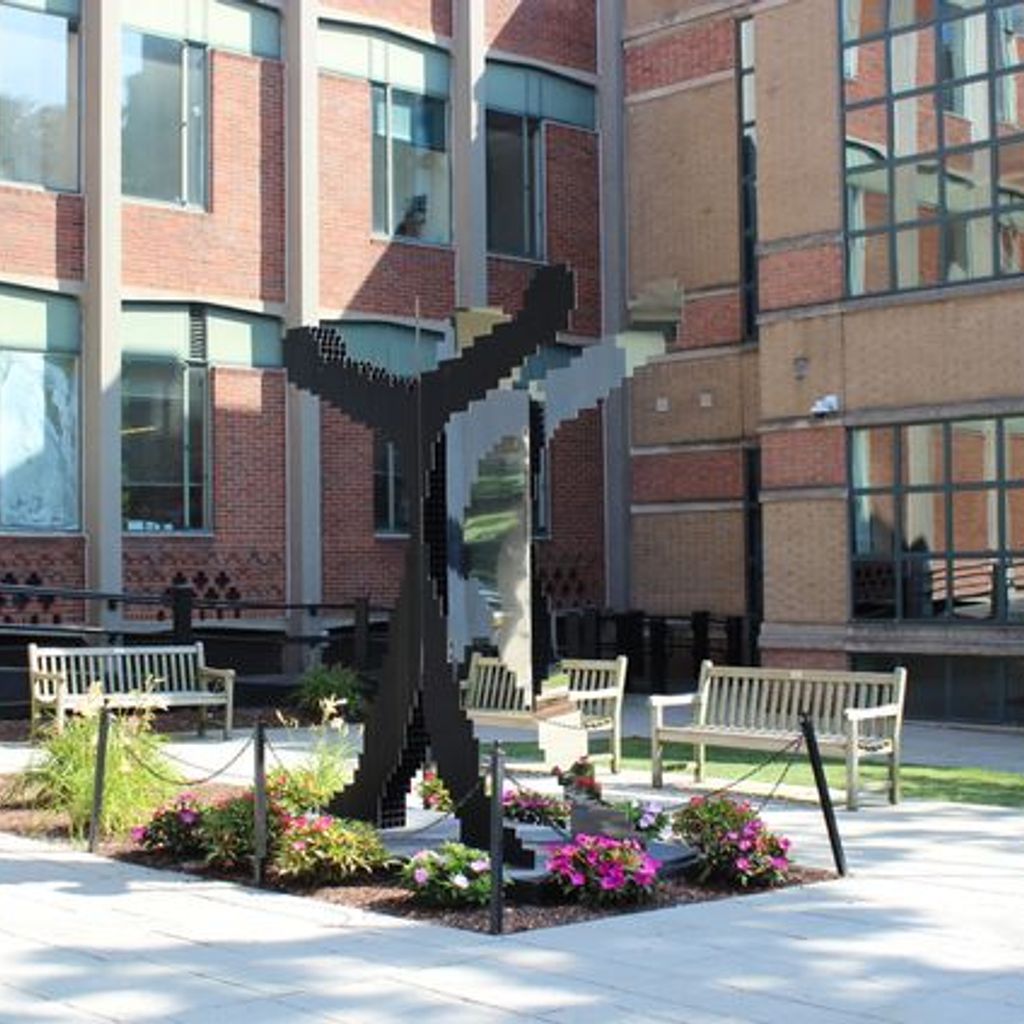
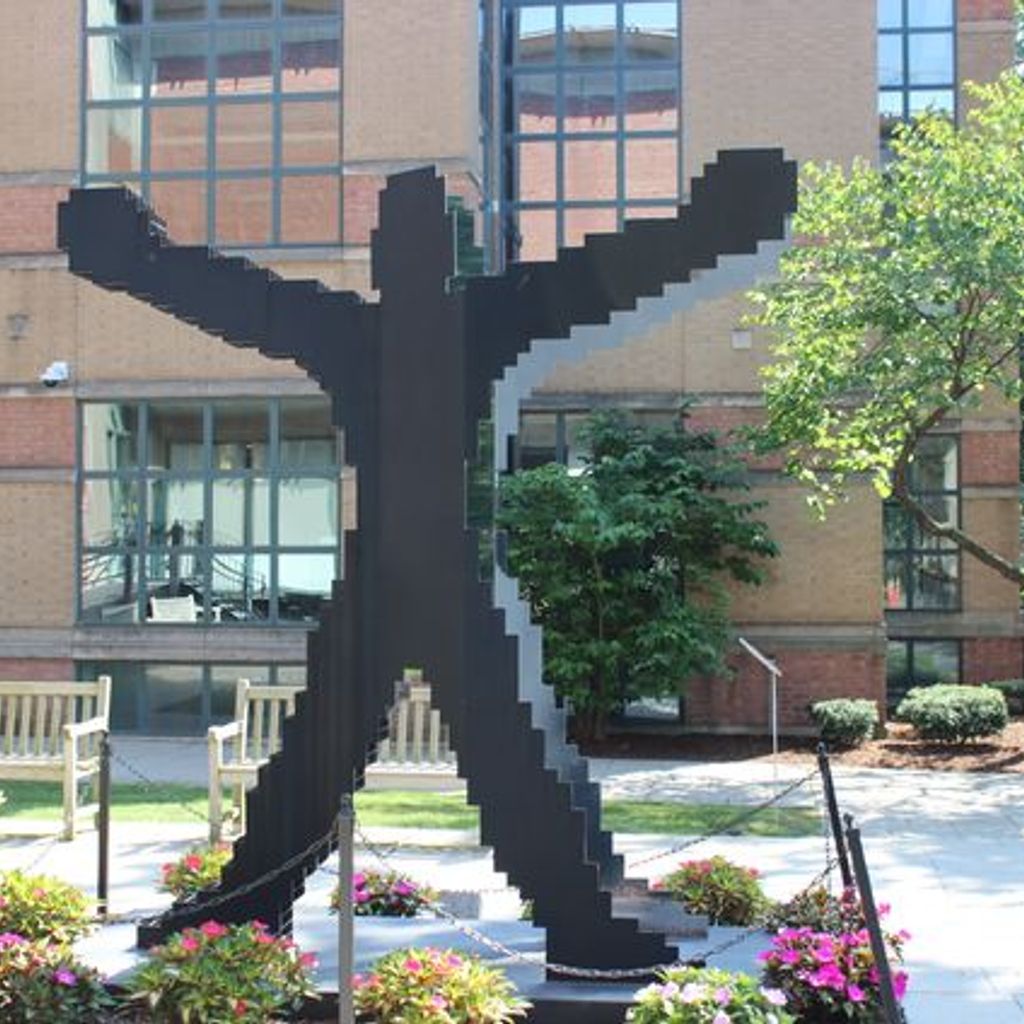

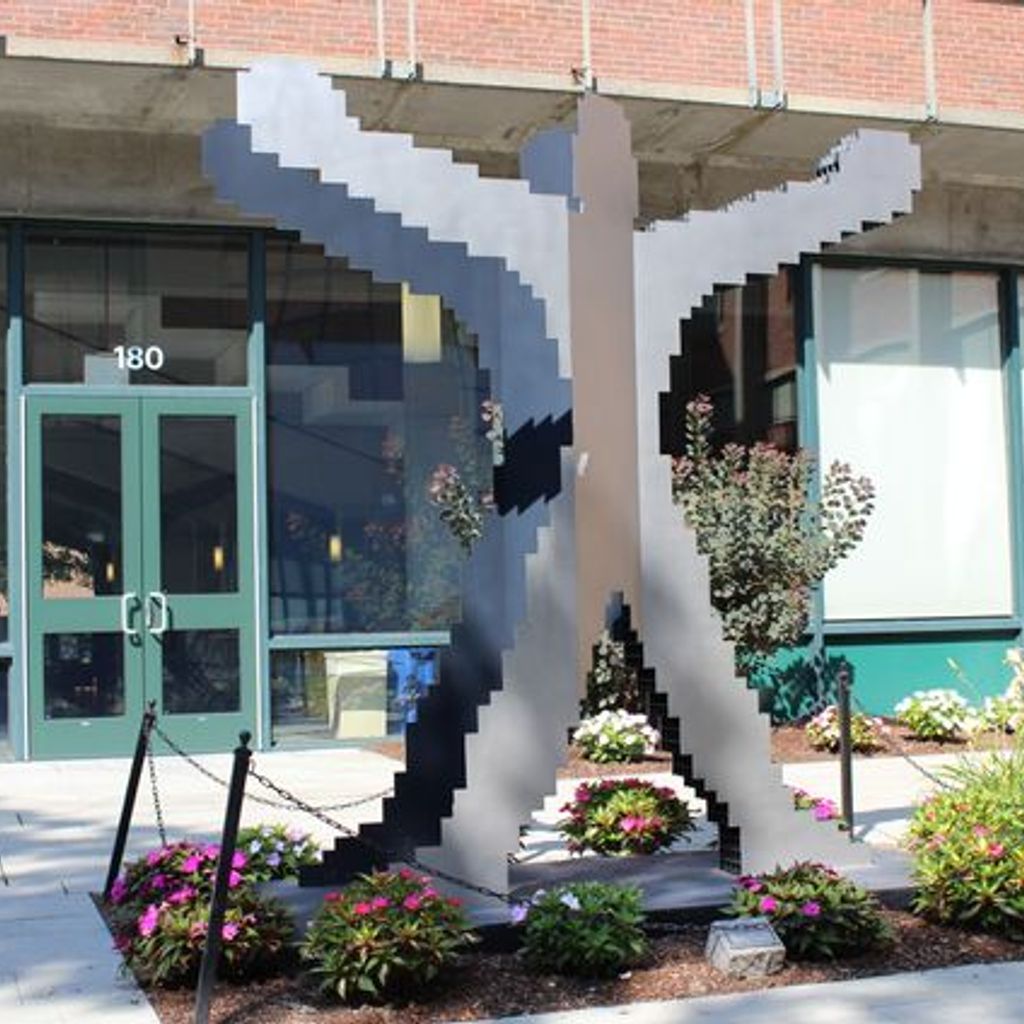
Three of Bakalar’s sculptures, We!, The Dance, and Life Force IV grace Boston University’s Fenway Campus. A resident of Boston, Bakalar received a PhD in Physics from MIT in 1951. Bakalar began his career as a sculptor at the age of 62 after being encouraged by the artist George Segal. The artist explores organic and geometric forms through the materials stone and metal. In addition to those on BU’s campus, Bakalar’s sculptures can be found locally on MIT’s campus, in the collection of Massachusetts College of Art and Design, Boston’s Federal Reserve Bank, and Brandeis University. Of his work, Bakalar states “I’ve always been fascinated by the codes and molecules that are the Life Force. My sculptures…abstractly reflect the complexity of this force and our common identity with all of nature.”
Map It: We! | Map It: The Dance | Map It: Life Force IV

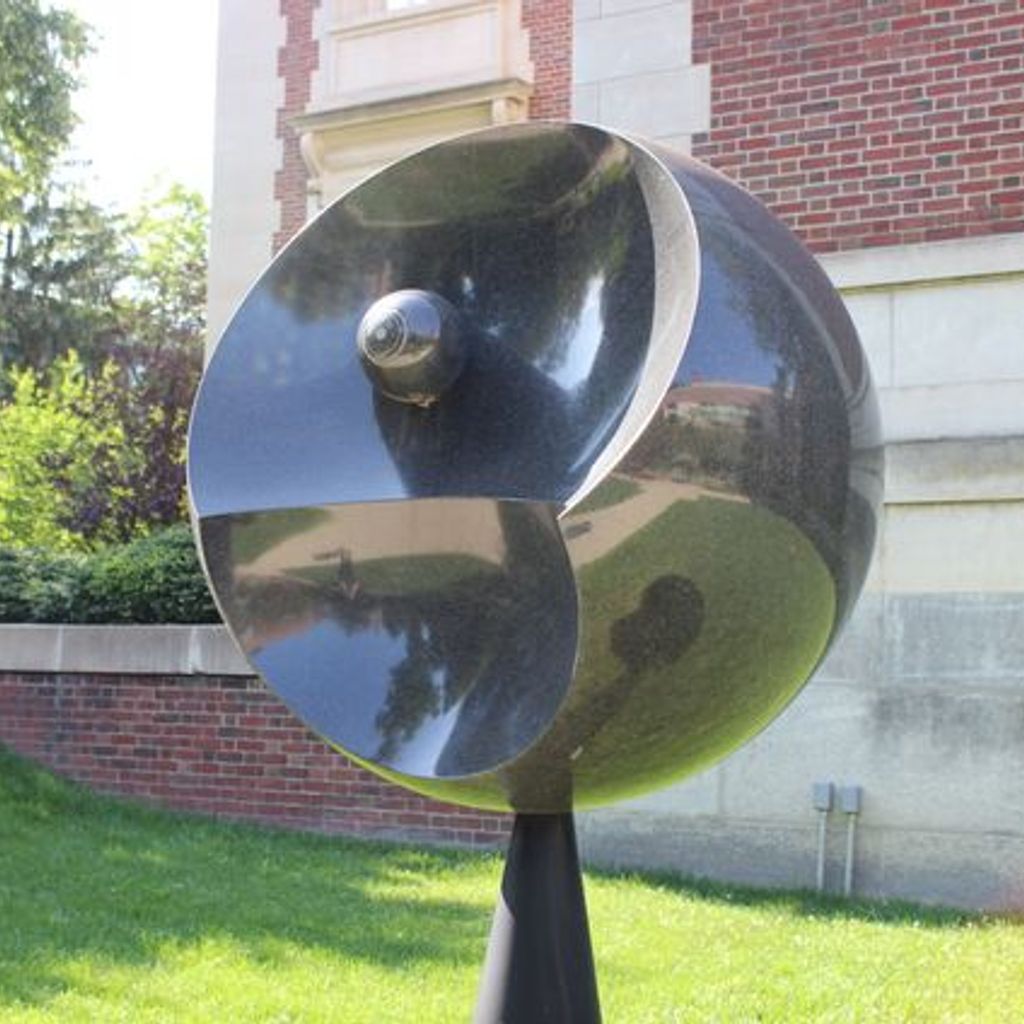
Carl Berkowitz

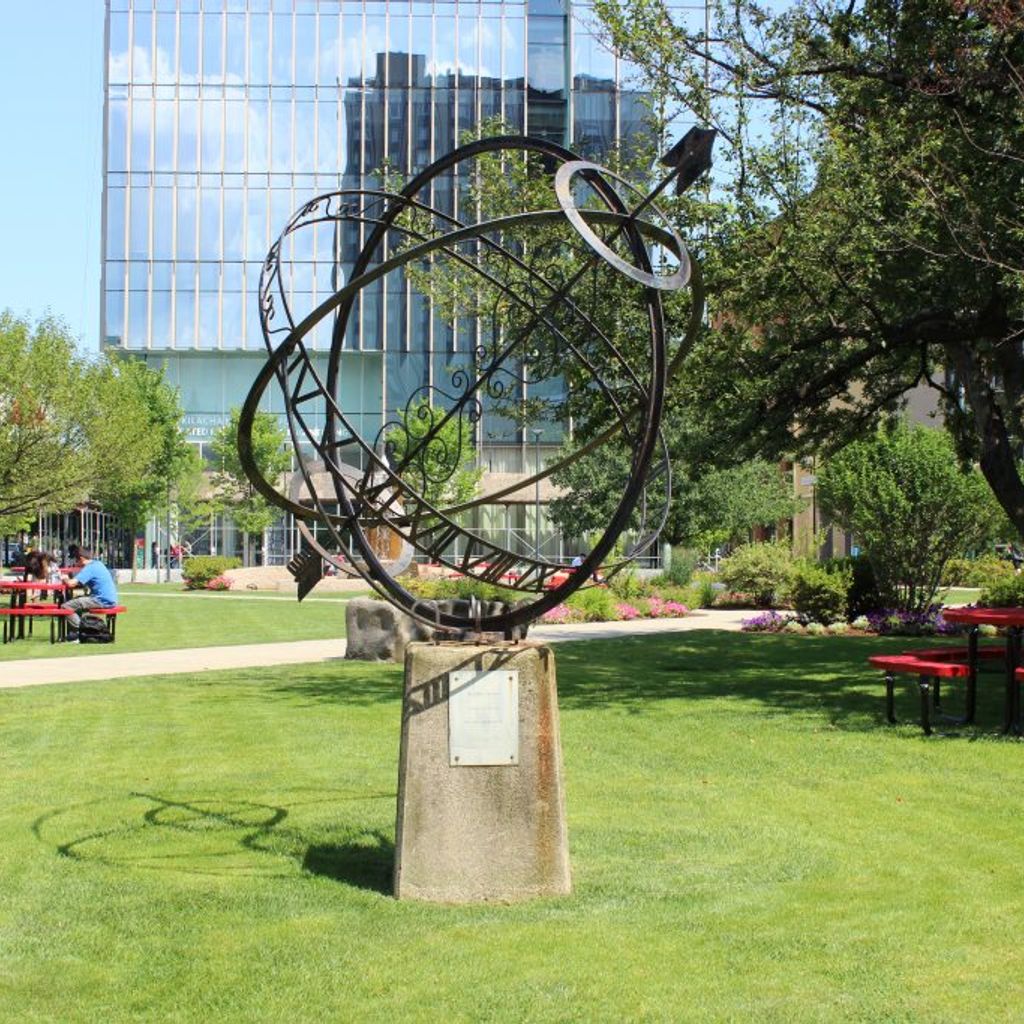
Armillary Sphere by Carl Berkowitz is on view outside BU College of Communication. No information is known about this artist. If you know something or have a bio for this artist, please contact us at artsinbu@bu.edu.
Sergio Castillo
Three of Castillo’s sculptures can be found across BU’s campus: Free at Last on Marsh Plaza, Earth Orbit in the lobby of Questrom School of Business, and Explosions located on the plaza in front of 590 Commonwealth Avenue. Known for creating works that attempt to harness explosive and powerful energy, Castillo worked in direct metal sculpture, a process he discovered in Italy in 1957. Born in Santiago, Chile, Castillo split his time between Boston, Chile, and Spain. The artist came to Boston to work on Free at Last, a memorial to Martin Luther King Jr., but stayed to teach sculpture at Boston University.



Free at Last is the first memorial to Dr. King in the United States. The 20-foot-high sculpture, consisting of a mass of birds attempting to take flight, is meant to evoke the famous closing lines, “free at last!” of King’s great “I have a dream speech.” The sculpture considers the relationship of the individual to the collective. There are 50 inter-connected bird forms to connote the 50 states. Up close, each individual bird attempts to be airborne, while from a distance the flock aligns into a singular large bird striving towards the sky.
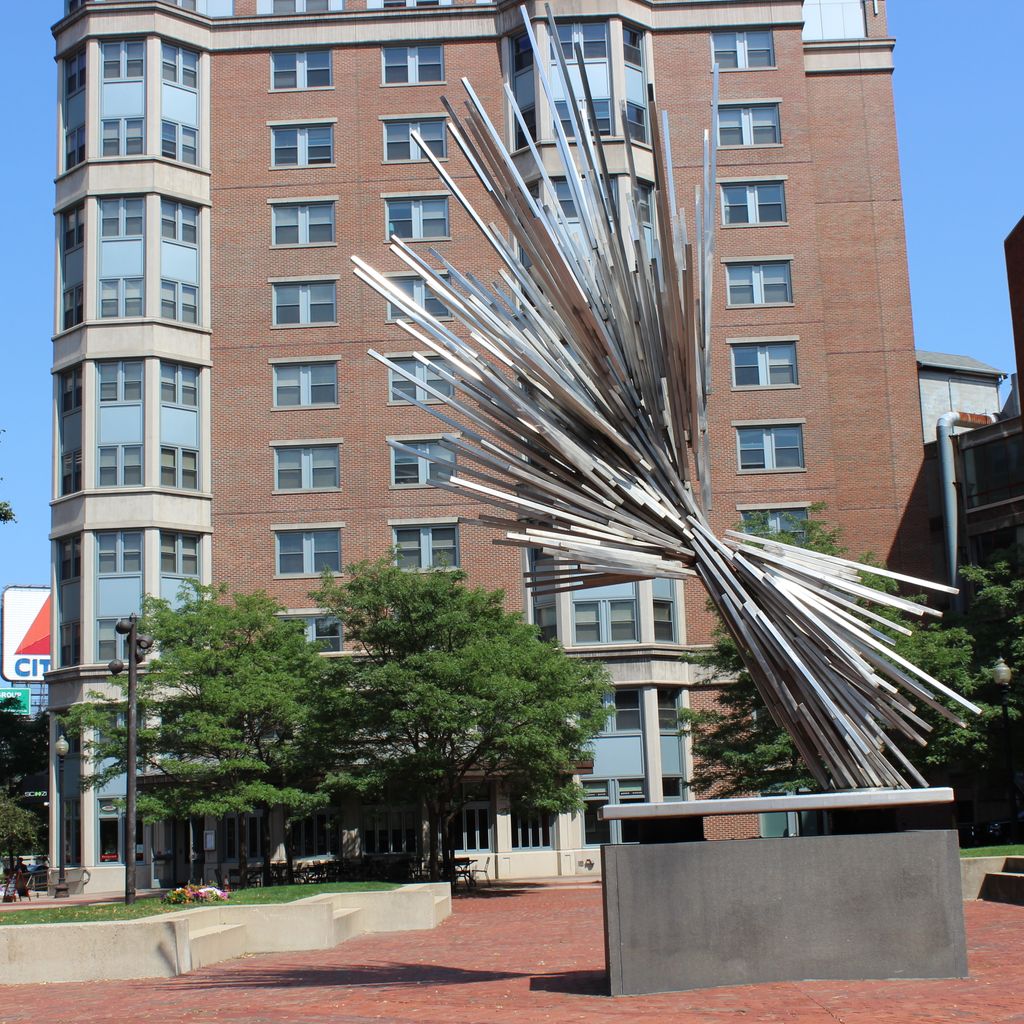
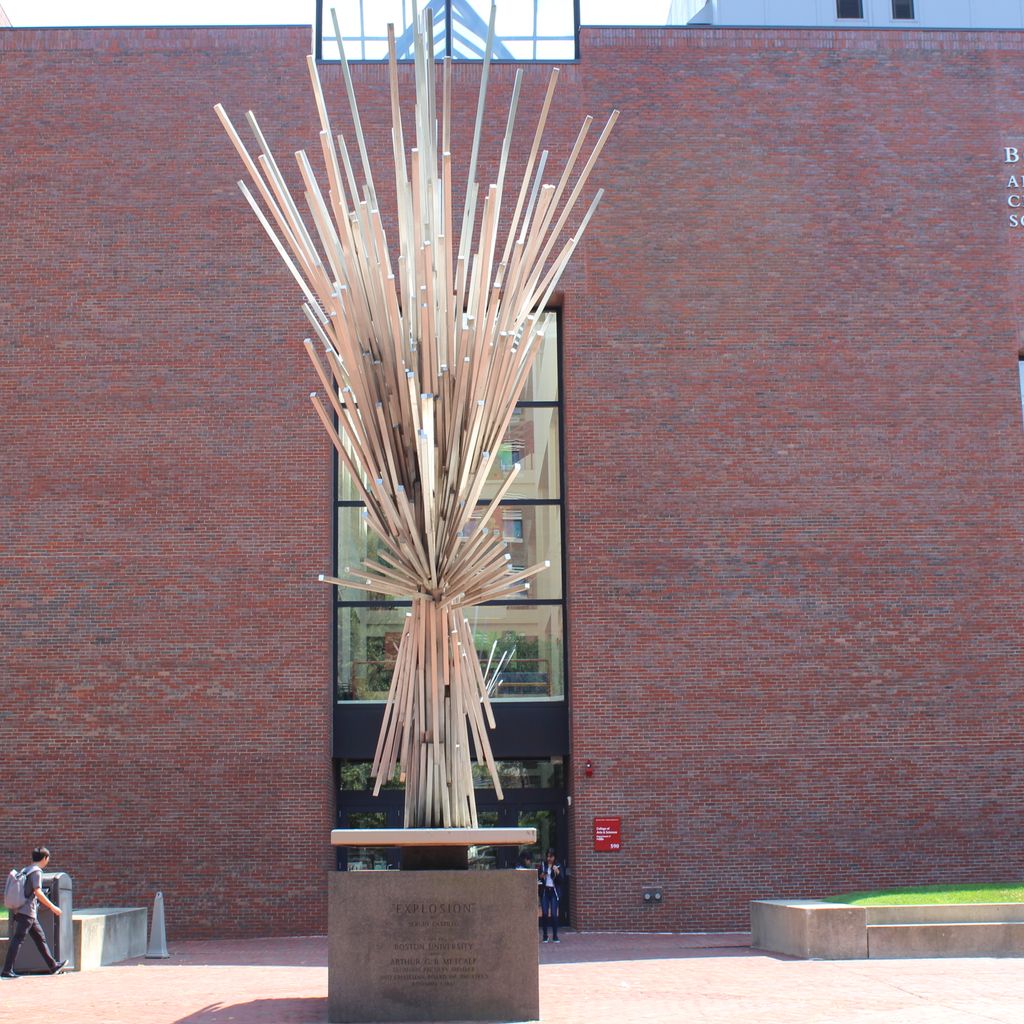

The potency yielded by Castillo’s handling of materials and his use of dynamic forms can also be seen in his work Explosions. Arthur Metcalf, a physicist and former chairman of the Board of Trustees at Boston University purchased the work for the University, and gave the sculpture its evocative title—seeing the work as an imaginative simulation of the collision of electrons.


Map It: Free at Last | Map It: Explosions | Map It: Earth Orbit
George Greenamayer

Greenamayer is a dedicated maker of public artworks, believing that public art should engage a wide range of people, both those with no art training and those well-versed in looking and interacting with artworks. Therefore, the artist emphasizes clear narratives. Greenamayer has been working in metal sculpture since the 1970s and during this time also served as a fellow at MIT’s Center for Advanced Visual Arts, focusing on an interest in Kinetic Art. More of his work can be found locally at Massachussetts College of Art and Design and the DeCordova Museum and Sculpture Park, Lincoln, MA.
Map It: Greenamayer – Untitled
Carson Fox
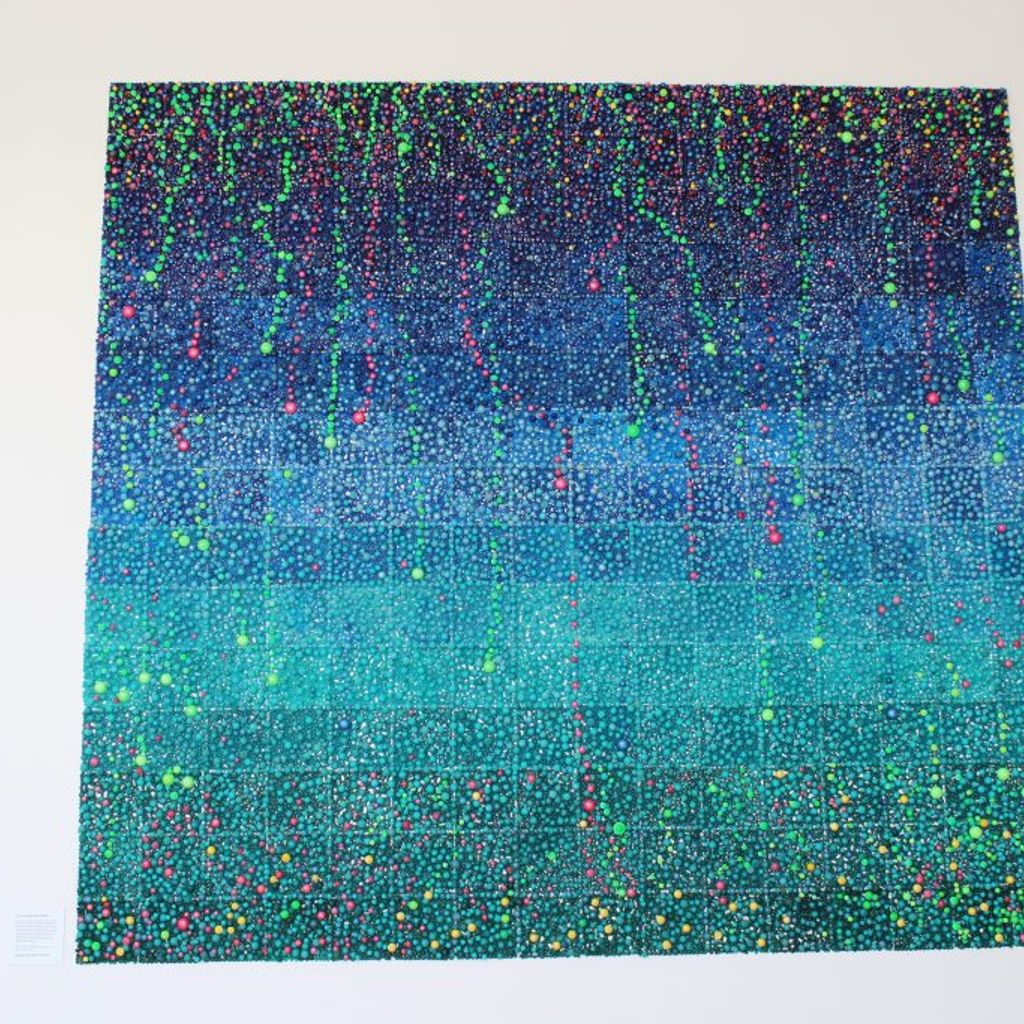

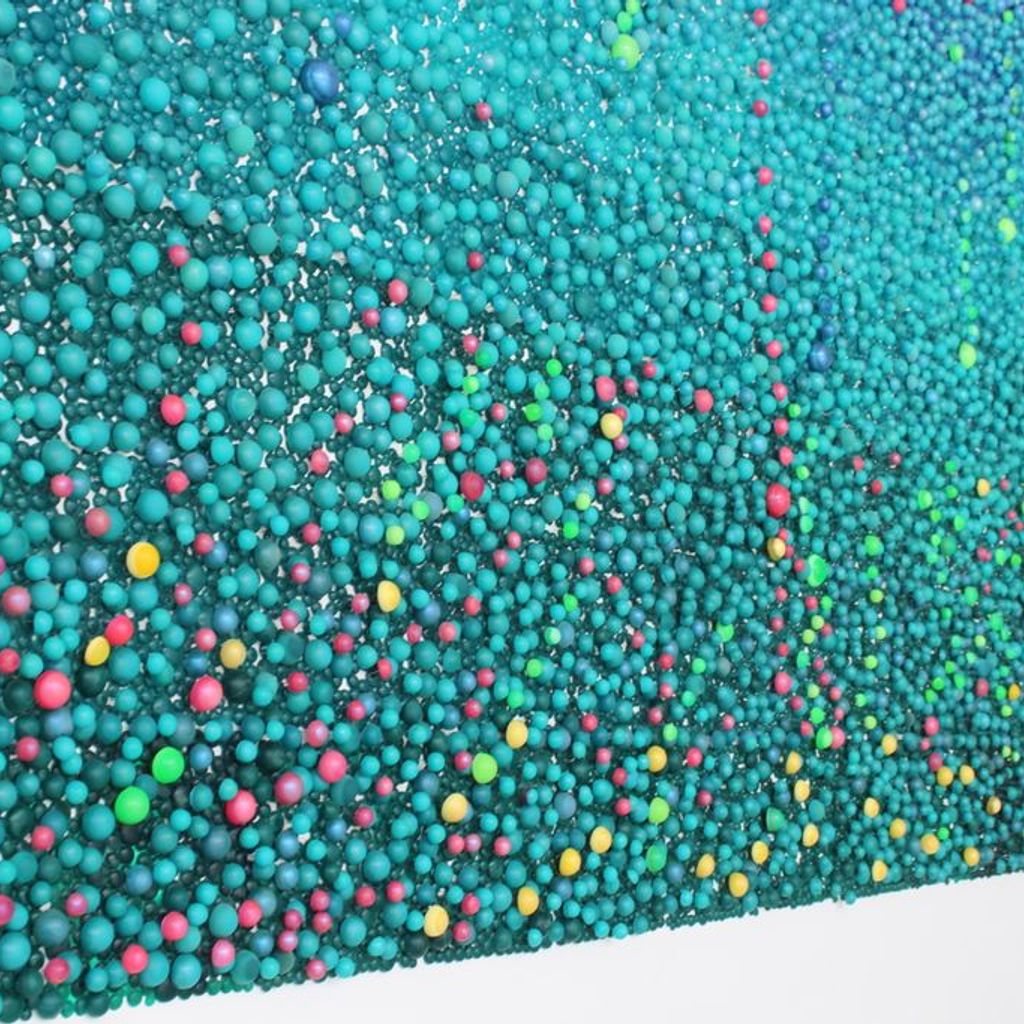
Fox’s Blue-Green Brainbow is made from over 13,500 individual pieces of cast resin. This work, made specifically for the Kilichand Center for Integrated Life Sciences and Engineering is inspired by the “brainbow” technique, which allows researchers to illuminate braincells. While in this case, Fox’s inspiration can be found within the human body, much of the Brooklyn-based artist’s work is influenced by complex forms found in nature such as coral and ice.
Russell Jacques


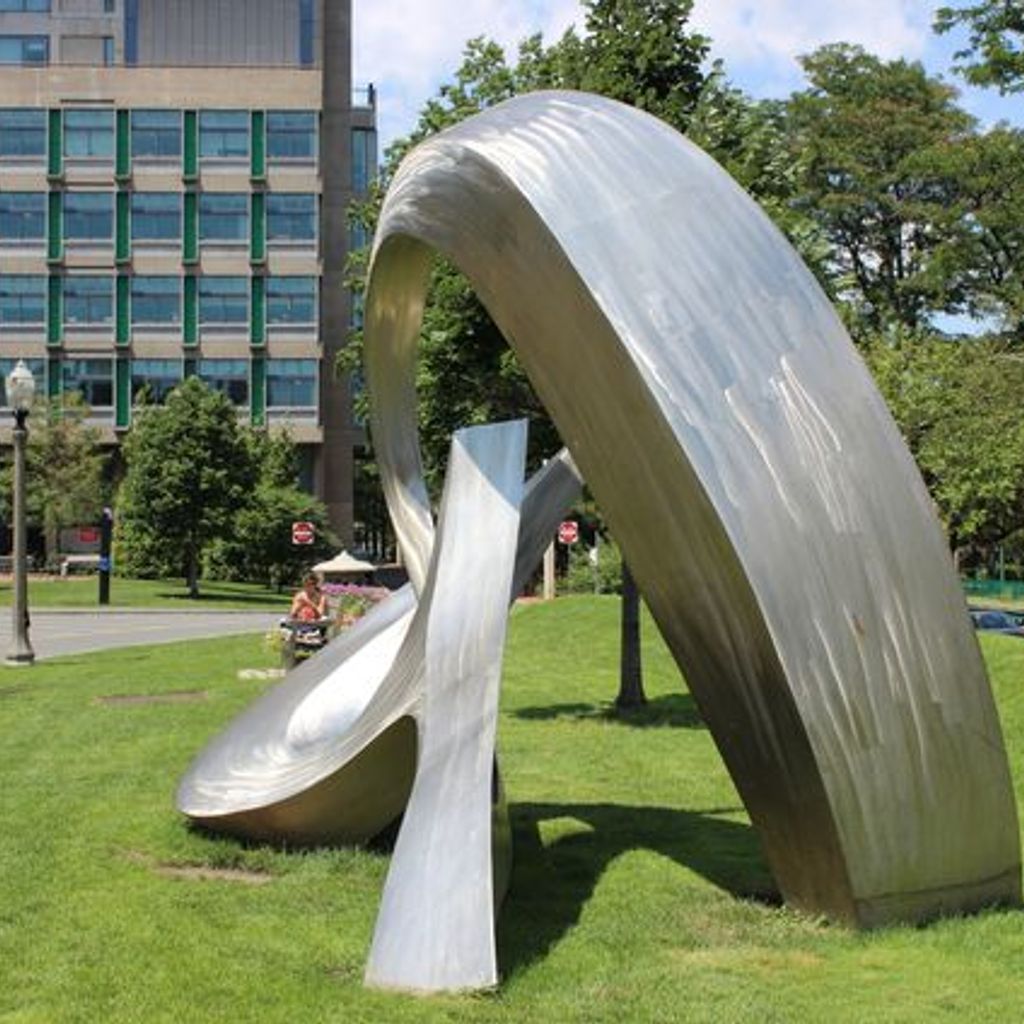
Jacques received his BFA from Boston University and designs his outdoor sculptures as integrative to the spaces they inhabit, thinking of his sculptures as a soothing and ethereal contrast to the landscape. Most of his work is done in various combinations of stainless steel and bronze. On his sculpture, Jacques says “I consistently try to attain a simple elegance in each composition with an emphasis on thick-thin line variation synthesized with rhythmic and interesting shapes.”



Harel Kedem
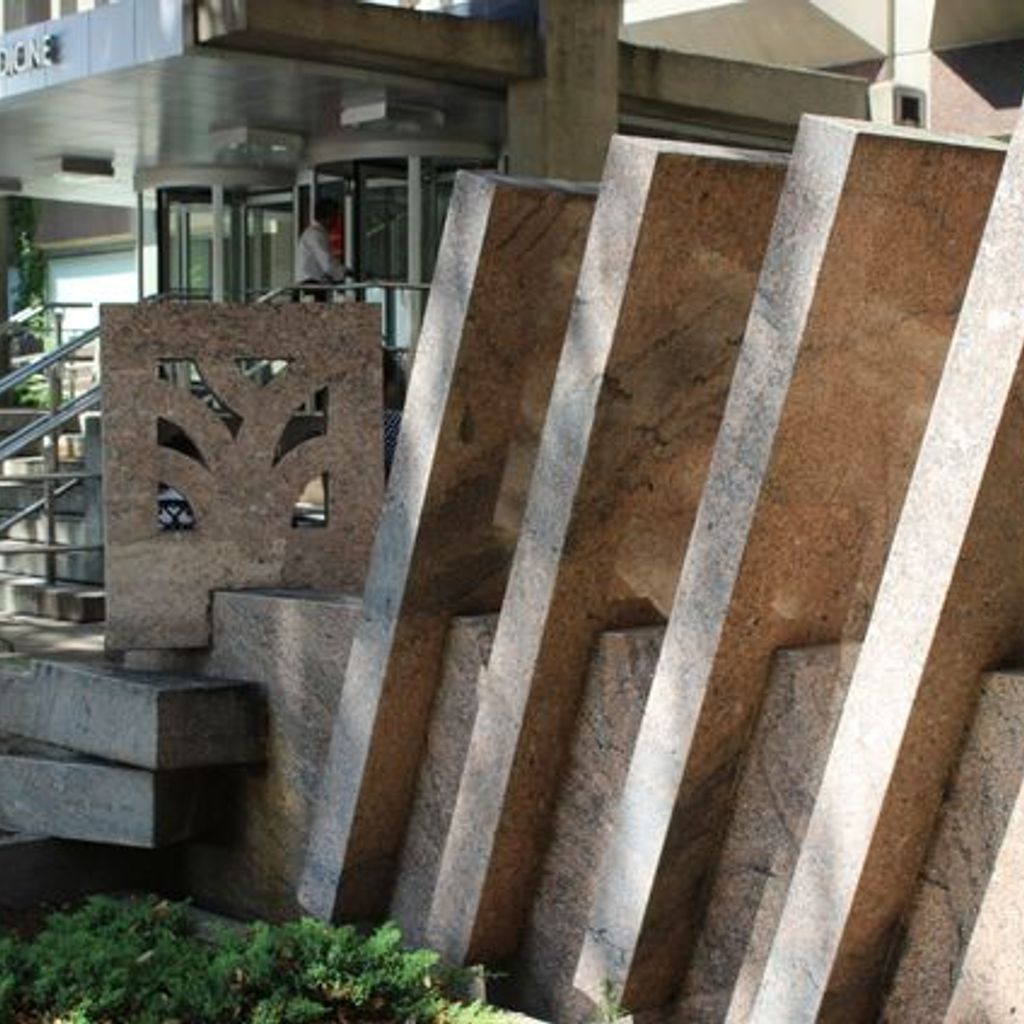
Much of Harel Kedem’s practice has been centered around New England’s prestigious institutions. Earning his degrees from Rhode Island School of Design (RISD) and MIT as well as serving as a fellow at the MIT Center for Advanced Visual Studies, he has also taught at RISD. His fountain in front of the Medical School’s Instructional building was gifted by the 50thanniversary of Nathan Fineberg MD (1930) and alumni family members.
Armand le Montagne

Armand Le Montagne is best recognized for his life-sized wood and bronze sculptures, often of important sports personalities. In addition to The Golden Greek, his work can be found at the Baseball Hall of Fame, Cooperstown, New York and the Basketball Hall of Fame in Springfield, Massachusetts, as well as the New England Sports Museum, in Boston, Massachusetts. In honor of Harry Agganis, a 1954 graduate of Boston University and celebrated student athlete, The Golden Greek is inscribed with the phrases “always excel” and “a sound mind in a healthy body.”
Gregg LeFevre


Two works by Gregg LeFevre can be found on BU’s campus. Both use epoxy over ferrocement, and rely on abstract, organic, and curvilinear forms as well as a singular color to create bold, visually striking pieces. LeFevre has created over 120 site specific public artworks and seeks to contribute to “the unique personality of a place.” A current resident of New York City, LeFevre has received grants from the National Endowment for the Arts and an award for excellence in design by the Arts Commission of the City of New York.
Map It: LeFevre – Untitled 775 | Map It: LeFevre – Untitled BSR
Edward Monti
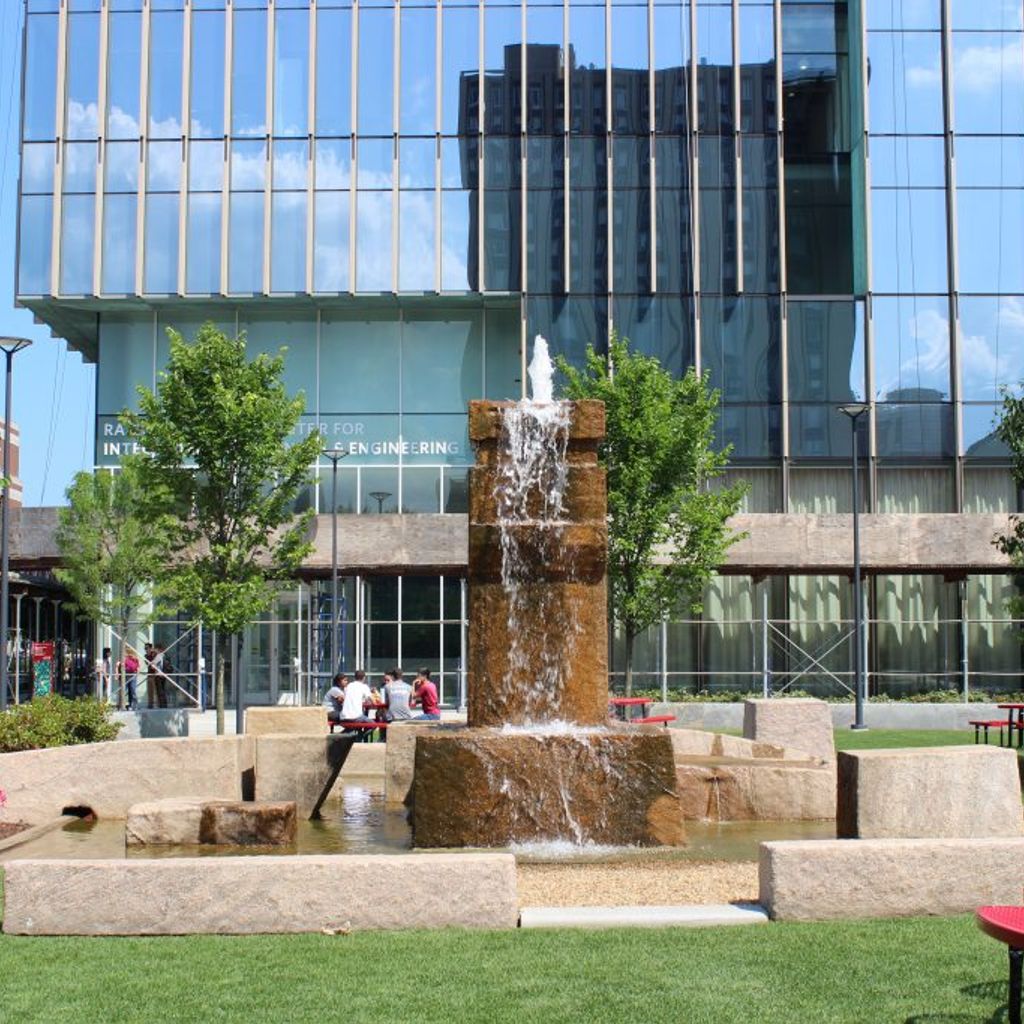

Two granite fountains sculpted by Monti can be found on BU’s campus. Monti came from a multi-generational family of Italian stone workers and pioneered a thermal sculpting technique in the 1960s, which uses flame lances, or torches, to cut through huge blocks of granite in quarries. Monti began his career by making traditional memorial sculptures, but found that work “boring,” and soon began to take inspiration from his own imagination. His monumental fountains and sculptures can be found throughout New England. In addition to Boston University, his work is also at Quincy’s Veterans Memorial Stadium and on the campus of Stonehill College in Easton, MA. The sculpture Windows is made from Quincy granite harvested from the Granite Rail Quarry and the base is made from Quincy granite harvested from the Swingles Quarry.
The jack-o-lantern is made from Stony Creek granite from Branford, CT. A massively powerful 6,000F liquid O2 and diesel torch was used to shape and subsequently hollow out the oversized gourde. Its playfulness and charm reflect the sculptor’s own personality and offer a different side to his normally larger and somewhat more serious water features and Bauhaus sculptures. When it first came to campus it was placed in a pocket park on BSR where it stayed until being moved to its current location behind the stands at Nickerson Field.
Map It: Fountain | Map It: Untitled
Hugh O’Donnell
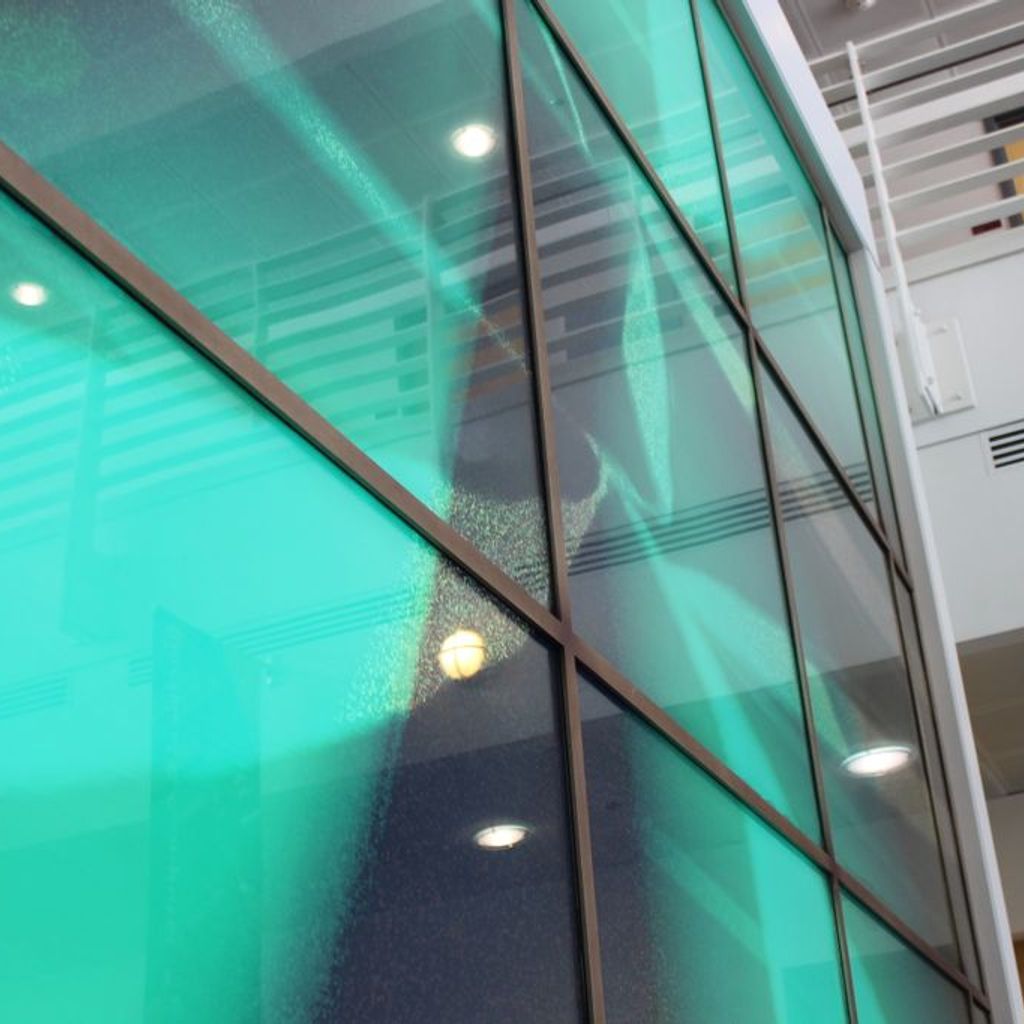
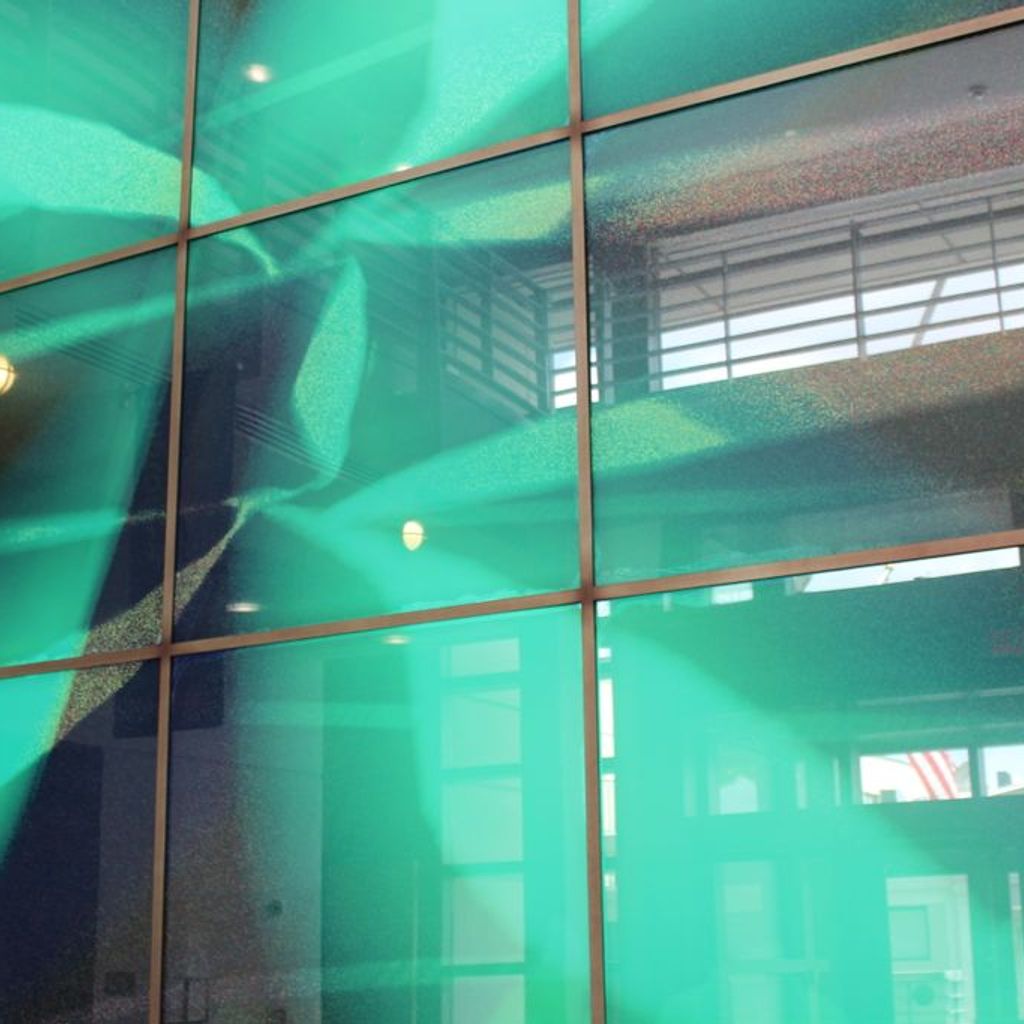

O’Donnell was Professor of Painting in Boston University School of Visual Arts for three decades beginning 1996. He has been making digital prints since 1993. First Light, a backlit digital transparency, was commissioned by the Photonics Center in 1998. O’Donnell views the ability of technical invention to push our physical limitations as part of the creative process, and approaches his digital works much in the same way he does his paintings.
However, he says, “I did not want it to imitate painting methodology. I wanted the instrument of the computer to come through. With digital media ideally, I want my work to be like that of a singer—even an unaccompanied singer- being asked to make an instrumental version of a song originated by humming the tune in your head…it’s in painting that I get all my melodies, but I love the collaboration of extended production in theater, in architecture – or anything else promising to amplify my voice.”
Virgil Oertle


Photo by Cydney Scott
The new Rhett bench, installed in 2019, is becoming one of the most popular spots on campus. Donated by the BU Alumni Council, Rhett was designed by sculptor Virgil Oertle and is between the BU Beach and the Alan and Sherry Leventhal Admissions Center. A graduate of Lyme Academy College of Fine Art, and Pennsylvania Academy of Fine Arts, Virgil Oertle has created unique sculptures of all shapes, sizes and for many purposes. In 2013 he began to focus on unique, branded, mascot benches and sitting areas for fans to interact with the sculptures. There was something about his designs that made the tributes a destination point. His concepts perfectly incorporate the story and character of the parent organization, and are an enduring tribute to each of our beloved masked friends.
Briene Rosner and Holland Dieringer

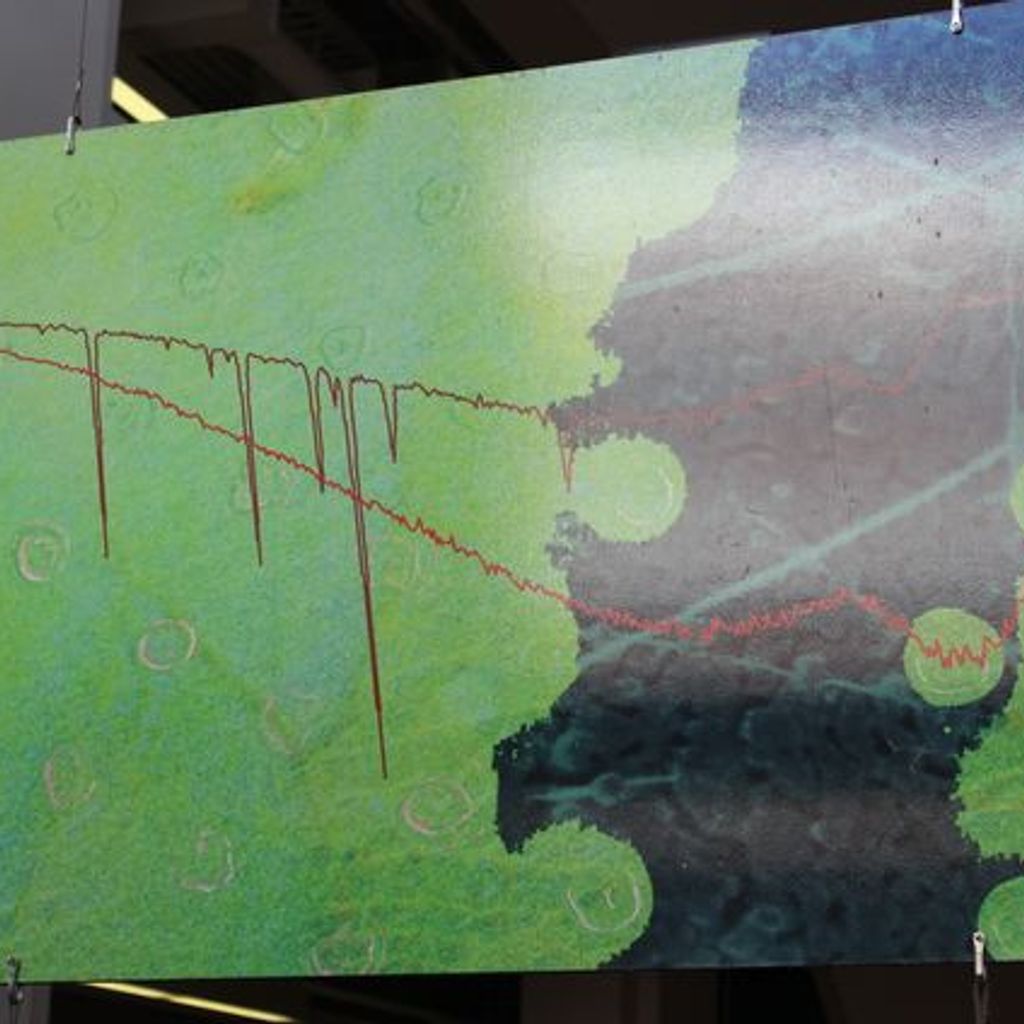
Visual Entanglements is the result of collaboration for course AR521, Site Specific Art taught by Hugh O’Donnell. The work fuses images collected from research groups in Physics, Chemistry, and Biology Departments at Boston University and is designed to show links between sciences and arts as well as the relationship to the natural world.
Frank Smullin



Smullin worked in sculpture, vector analysis, and computer-aided sculpture before his untimely death in 1983. Smullin’s residencies between 1979-1980 at MIT’s Center for Advanced Visual Studies and Sculpture Space, in Utica, New York enabled him to make large-scale works. His sculptures often celebrated the simple knot, favoring a “simple framework” within which he could expand metaphorically. Alongside his sculpture, Smullin developed and relied on a computer program to help produce his works. As seen in his work Labyrinth of a Datalist on BU’s campus, Smullin ties large, steel columns in great, tense knots. Of his work, Lawrence Fane writes, “the pipes could squeeze and pull, constrict the space passing through them, and generate a sense of contained and bursting energy.”
Igael Tumarkin


Tumarkin’s 1976 Homage to Dürer is inspired by the sixteenth century German master Albrecht Dürer’s 1514 masterpiece Melencolia I, and a similar piece can be found in Nuremberg, Germany. The composition of the German-Israeli artist’s sculptures were influenced by his trips to New York in the 1970s, becoming horizontal as a counter to the extremely vertical orientation of skyscrapers.
Rebecca Wasilewski
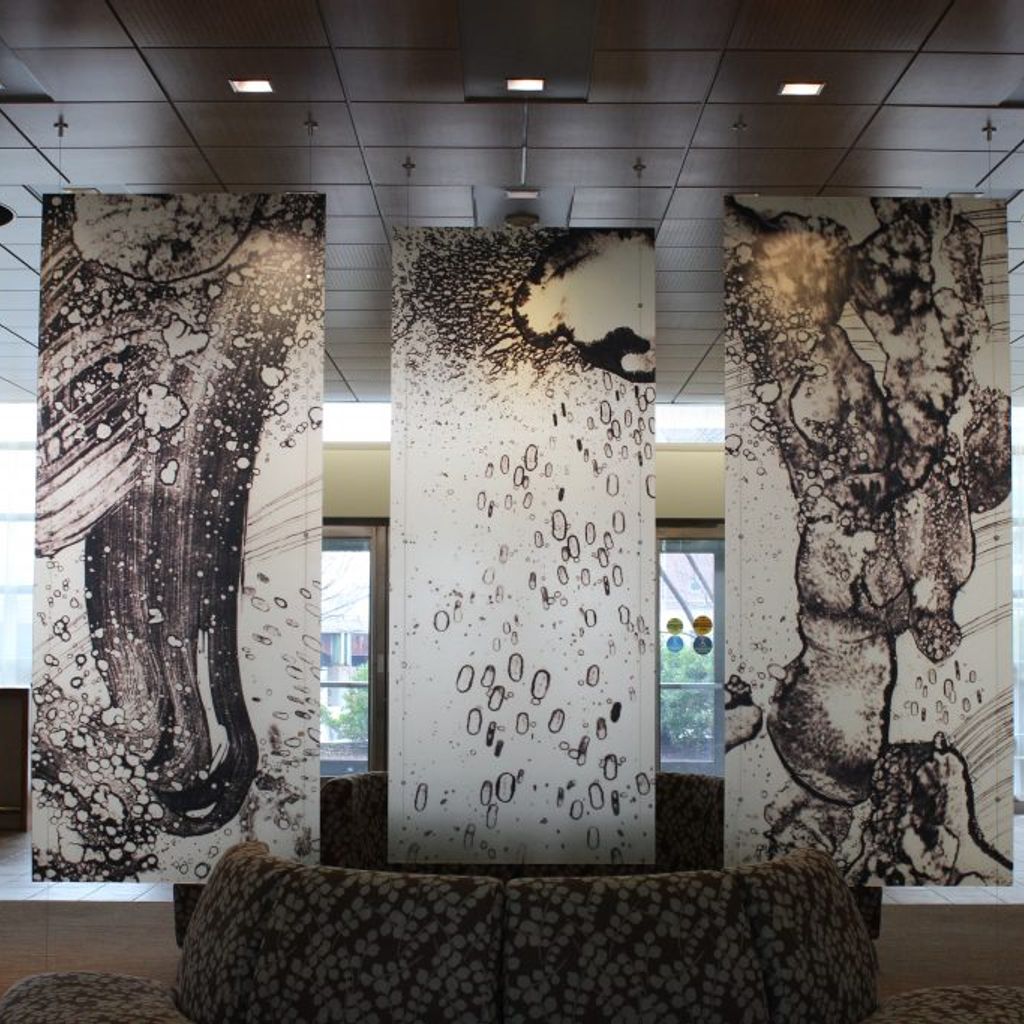
Wasilewski (CFA’07) designed a series of hanging opaque panels for StuVi-2 student housing. The panels were designed for the space from the artist’s print series Microscopium, and the translucent quality of the panels bathes the ink monoprint in a soft glow.
Unknown Artist, Froebel Frieze


Lucy Wheelock standing in front of Froebel Frieze
The “Froebel Frieze” which hangs over what was formerly Wheelock College’s library depicts Friedrich Froebel, German educator and inventor of the concept of kindergarten. Above, archival photo shows Lucy Wheelock standing in front of Froebel Frieze.
Unknown Artists
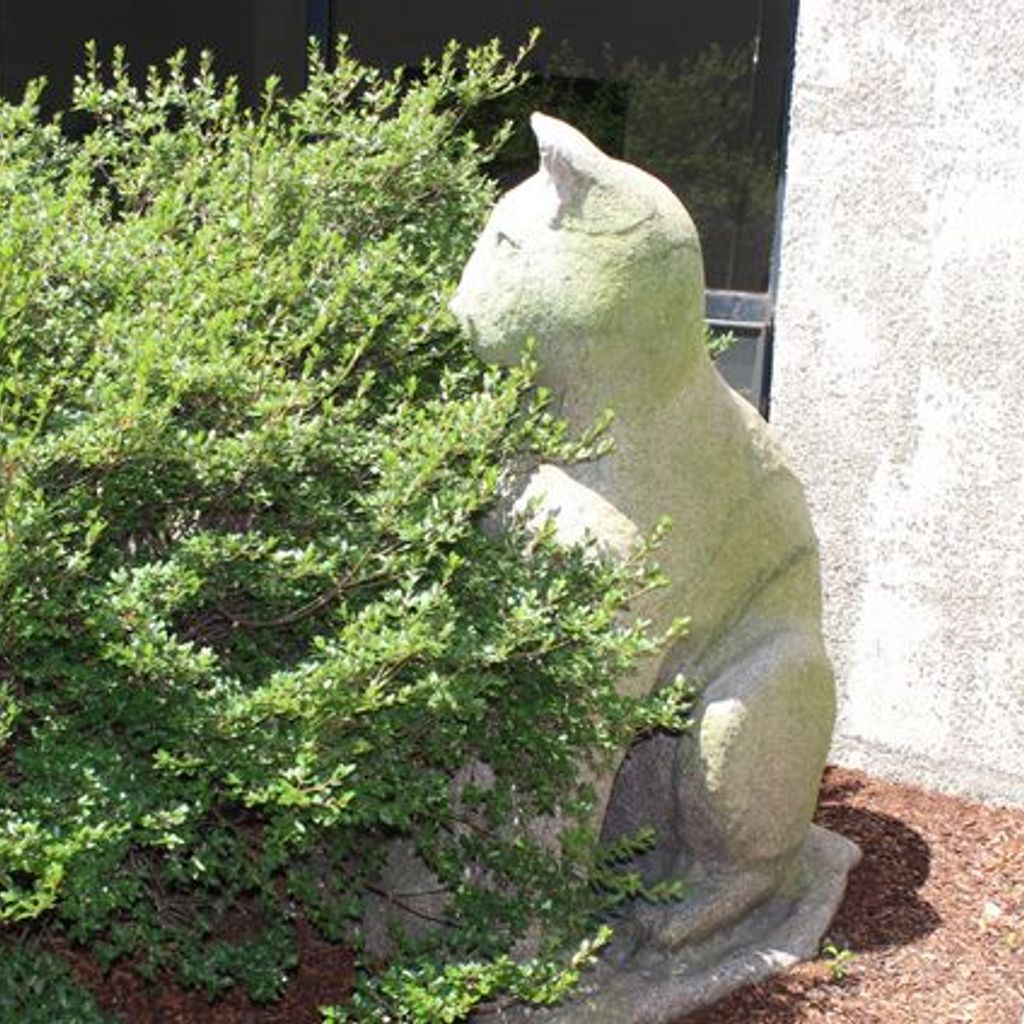
Unknown art at 871 Commonwealth Ave
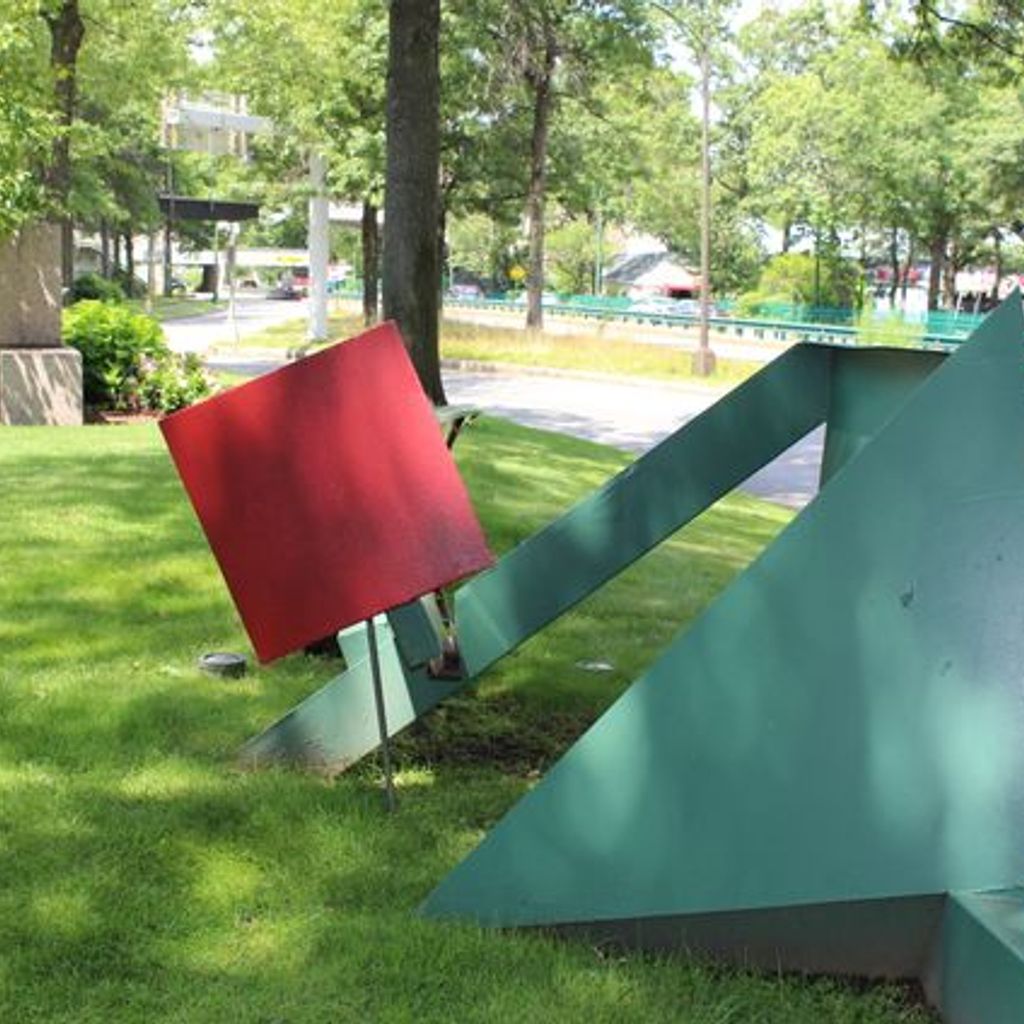
Unknown art at 775 Commonwealth Ave

Unknown art on the BU Beach

Unknown art on the BU Beach

Unknown art on Alpert Mall

Unknown art at 72 East Concord St

Unknown art at 10 Buick St
Temporary Installations
Boston University hosts temporary exhibitions and installations every year. Find some recent ones below listed in reverse-chronological order.
Natural Wanderment: Stewardship. Sovereignty. Sacredness. (2024)

Natural Wanderment: Stewardship. Sovereignty. Sacredness. is part of the expansive Project 562: Changing the Way We See Native America, by Matika Wilbur. The book by the same name was published in April 2023, and instantly became a New York Times Best Seller. Project 562 is a bold creative expedition to collaborate with each of the 562-plus sovereign Native American nations in the United States in their own territories for superb photographic portraits and compelling narratives of contemporary Native American identity.
Over the course of producing Project 562, Wilbur traveled through all 50 states, from Seminole country, now known as the Everglades in South Florida, to Inuit territory, now known as the Bering Sea in Alaska. By her estimation, she photographed some 1200 people, personally visiting about 400 different tribes.
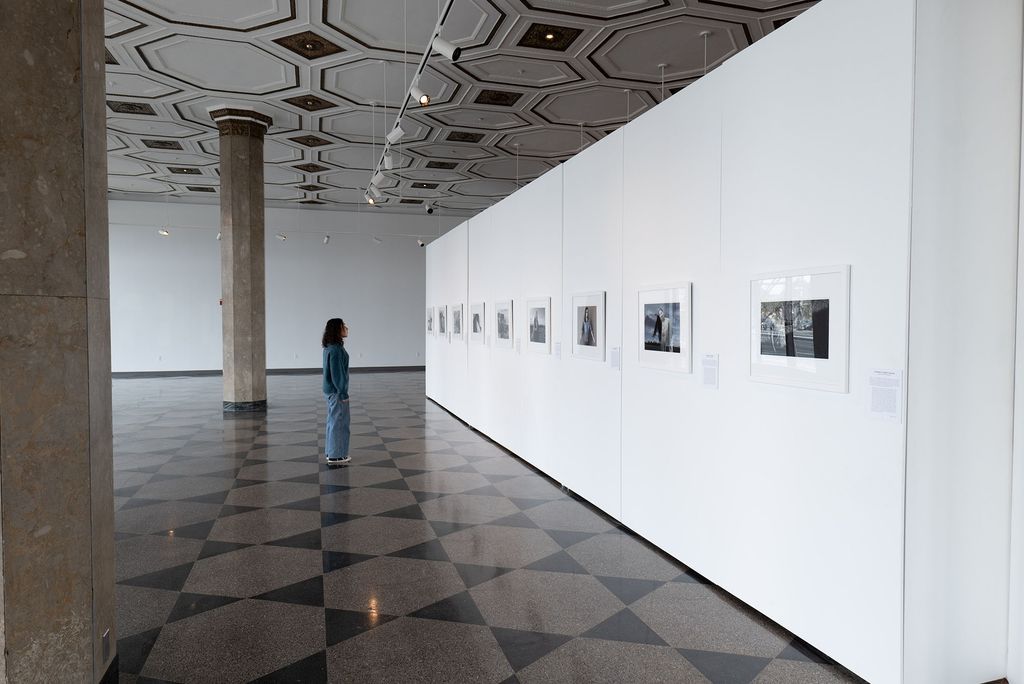
Celebrating Native American Tribal Nations: Photography Exhibition
Natural Wanderment, a collection of photos by Matika Wilbur, was on view at BU Art Galleries’ 808 Gallery in early 2024.
MASHQ & Winter Dreams by Elizabeth James-Perry (Aquinnah Wampanoag) (2022)
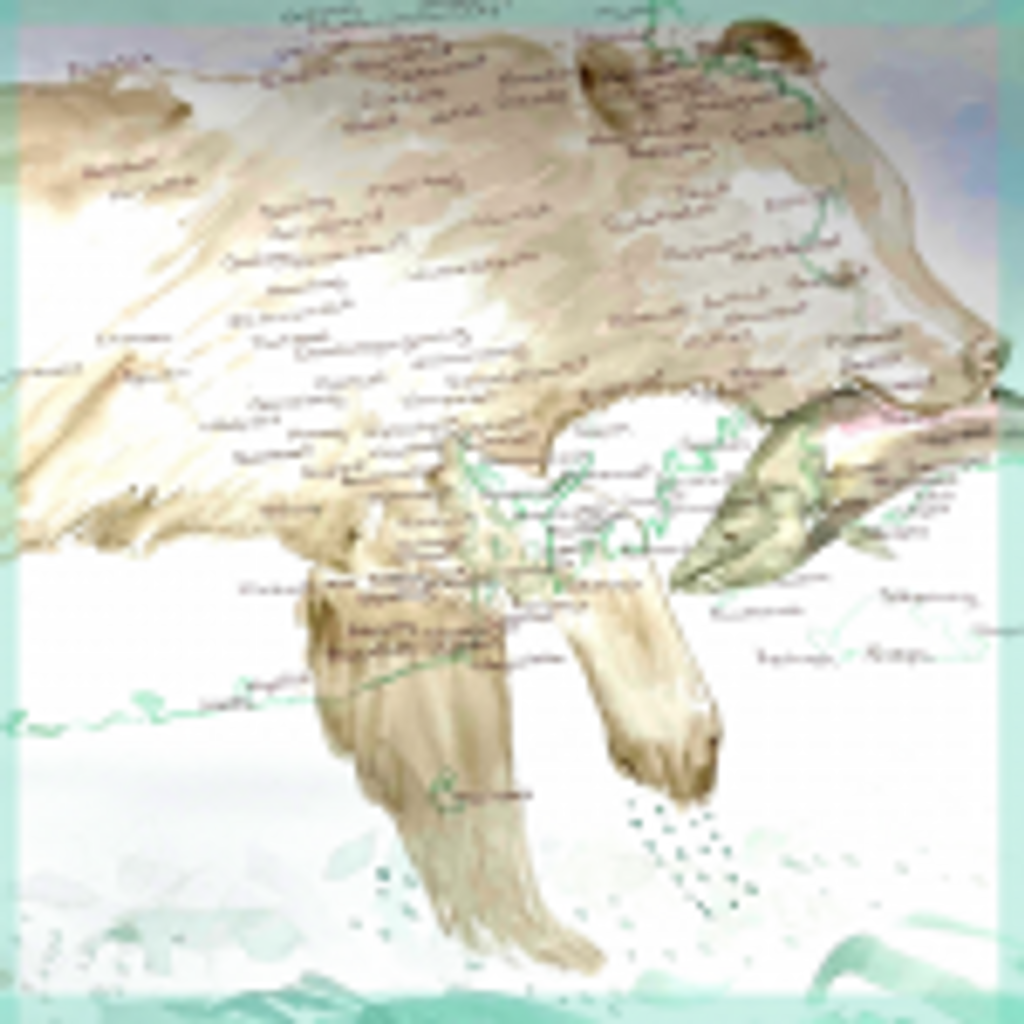
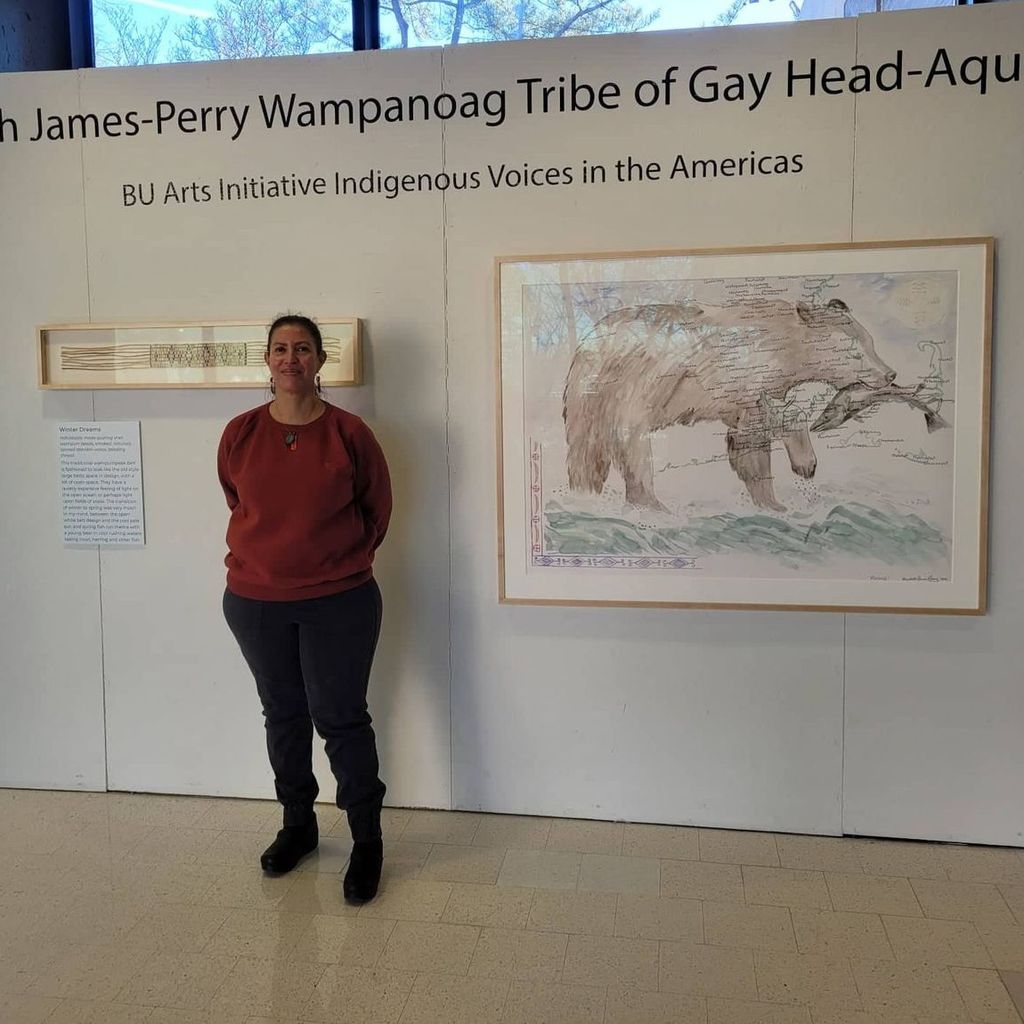

Internationally known artist Elizabeth James-Perry is enrolled with the Wampanoag Tribe of Gay Head -Aquinnah in Massachusetts. James-Perry makes distinctively robust and textured wampum shell jewelry, porcupine quillwork, and northeastern twined textiles. She creates substantial heirloom quality adornment items reflecting her Algonquian diplomatic heritage.
Her first piece on display features a map of Massachusetts overlaid with the faint outline of a bear. Black bears were very common here, and their populations may be rebounding in areas where there is enough human tolerance, space, and natural resources like healthy fish to support them. For this map she chose to realize the Southern New England landmass as a bear to point to the Native attitude to the earth as a living being that is worthy of our respect, and care. Place names like Sinnechetaconnet, Pocutahunk, Assonet, Monponset are descriptive village names in the closely related Indigenous languages here: Wampanoag, Nipmuc, Mahican, Narraganset/Niantic, many of which later had the newcomers towns and cities planted right on them. And they were renamed for places in England. In using Native placenames, she reclaims Native space in the northeast. James Perry also creates a traditional wampumpeak belt.
The traditional wampumpeak belt is fashioned to look like the old style large belts; spare in design, with a lot of open space. They have a quietly expansive feeling of light on the open ocean, or perhaps light upon fields of snow. The male and female keepers of such pieces here in Massachusetts knew the stories and events very well by memory, and were not all depending on complex symbols to recall traditional knowledge and diplomacy at large gatherings or ceremony. Such wintertime gatherings for storytelling were common when there were many tribal communities in a region criss-crossed by well-traveled paths.
Home – Kabita Das (2022)

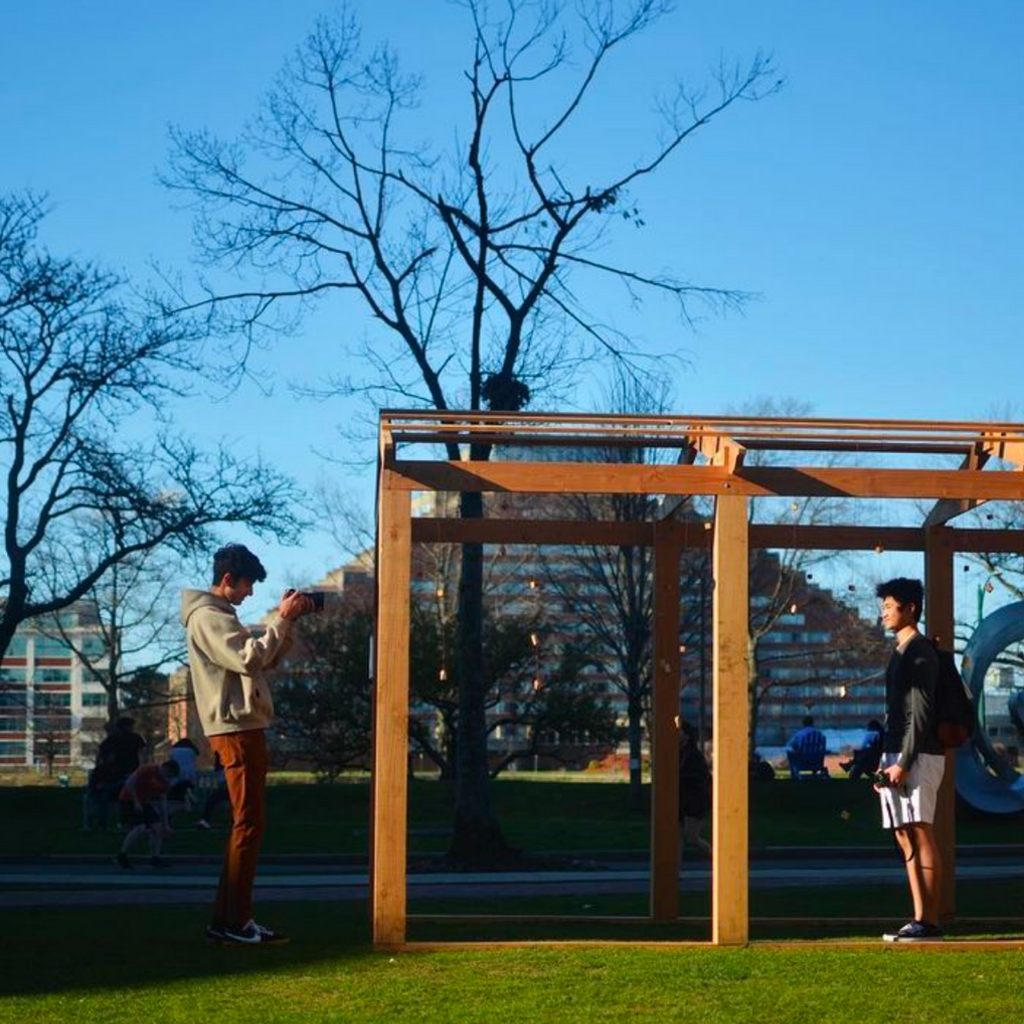

Kabita Das (CFA’20) created the Home Reconstructed Installation, an interactive installation both digital and physical that offers the viewers the opportunity to dissect their idea of a home in order to better understand how they move through space.
Everyone carries with them an idea of what home is based on their own upbringings and their past experiences and this idea changes as they move through life. When an individual builds a place to live, they physically represent the moments and the memories they cherish most and that they choose to carry with them. As people have unique backgrounds, the makeup and structure of their homes is unique as well. However, the single unifying factor is that these homes are inextricably tied to their own life.
Halle Cooper (2022)

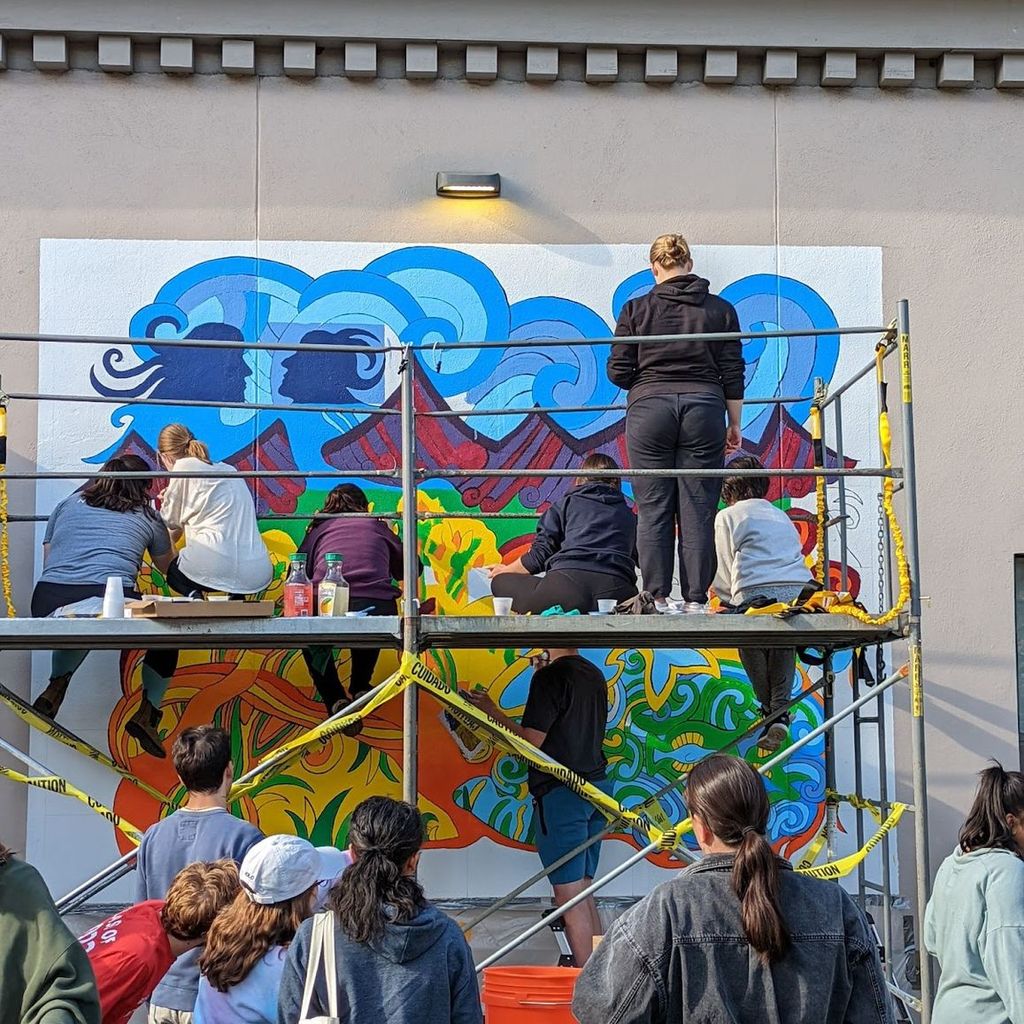
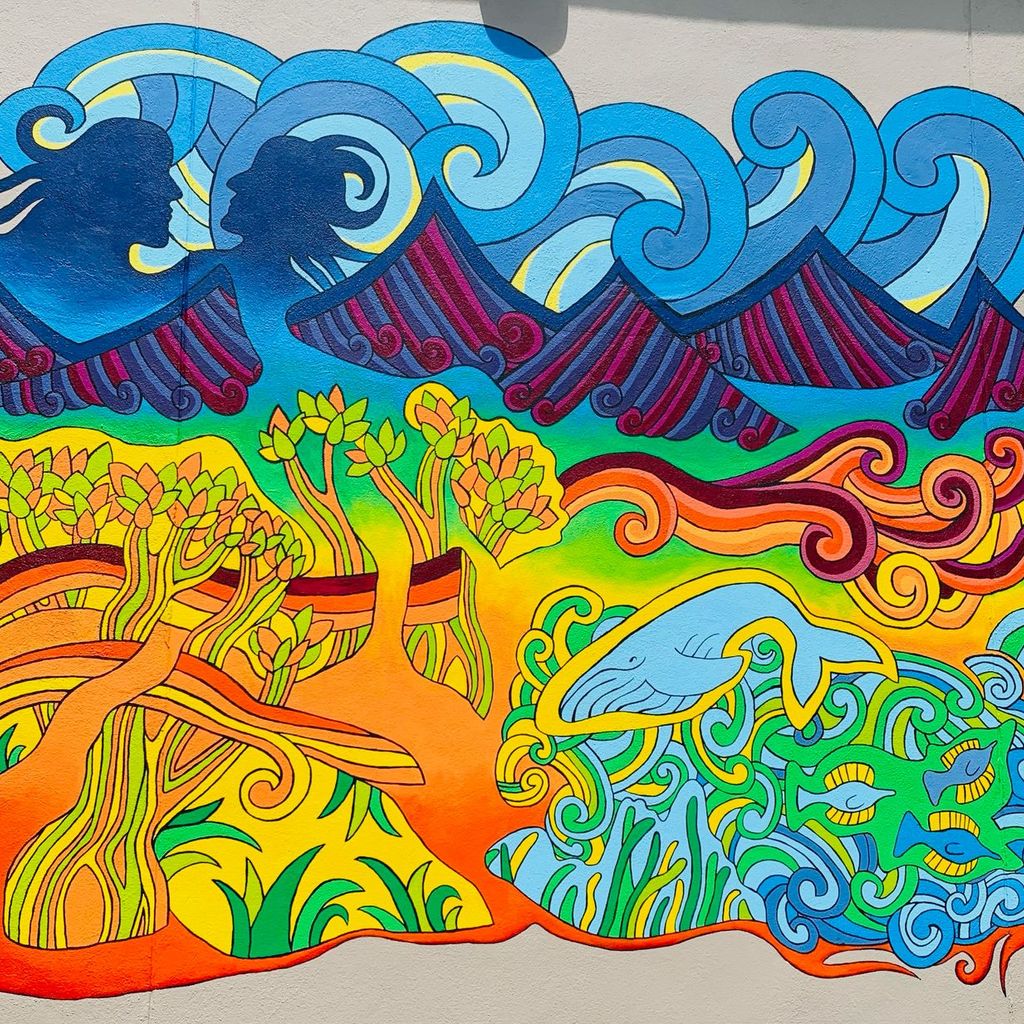
During Senior year at BU, Halle Cooper (CAS’22) created and led the BU ESO Mural project. Cooper wanted to highlight the destructiveness of climate change and environmental justice. Awash in neon hues, the mural depicts thick, curling lines weaving through Earth’s ecosystems. The sky sweeps into the mountains, going from blue to green to orange as it flows into forests, grasslands, and the ocean. Cooper wanted to highlight the celebration of the different cultures that have had a positive, sustainable, and respectful relationship with the environment rather than a narrative of anthropogenic destruction. Art is a powerful communication tool that can lead to lasting relationships between students and Indigenous communities.
The mural was designed in consultation with Erin Genia (Sisseton-Wahpeton Oyate/Odawa), and created through a collaboration between Keeley Bombard, the Environmental Student Organization (ESO), The Urban Gardening Initiative (TUGI Boston), Ty Furman from The Arts Initiative, and Orpheo Speer (Tewa/Apache/Diné), the Director of the Community Service Center. Members of these groups and of the greater Boston community painted the mural in April 2022.
Grow Your Future (2022)
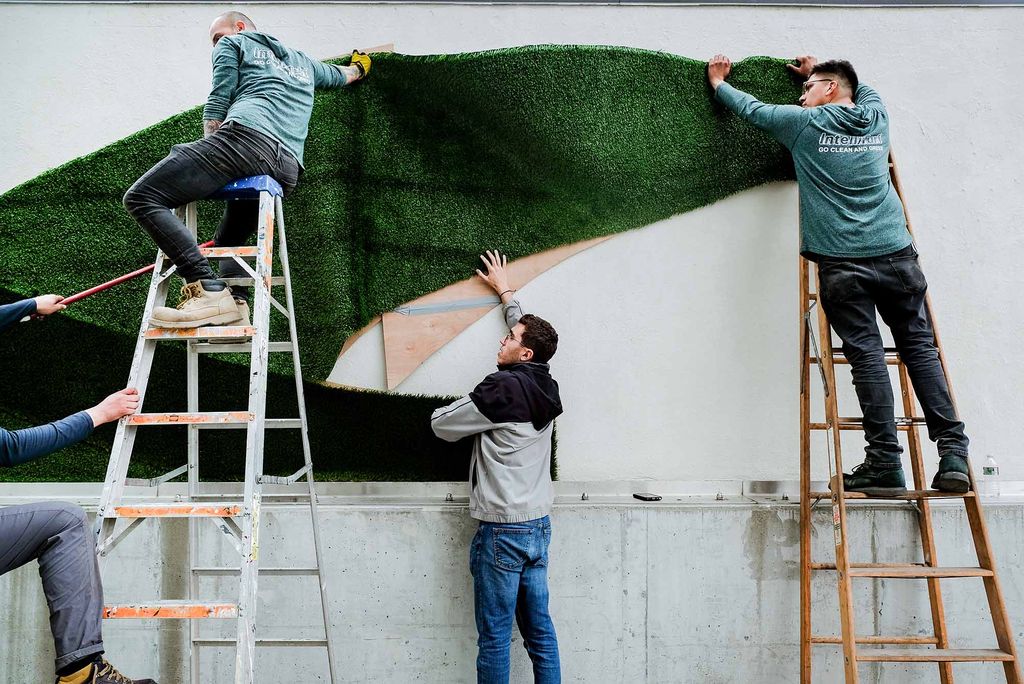
Grow Your Future raises awareness on sustainable architecture as a means to fight climate change while motivating students and beautifying the surrounding area. This public artwork, located on the west end of Booth Theatre plaza at 820 Commonwealth Ave., promotes the need for sustainability not only in architecture, but in every possible field in the BU community.
This verdant grassy mural features the phrase “Grow Your Future” embedded along interwoven strips of turf. Grow Your Future unites both the students and the university and allows collaboration between both parties.

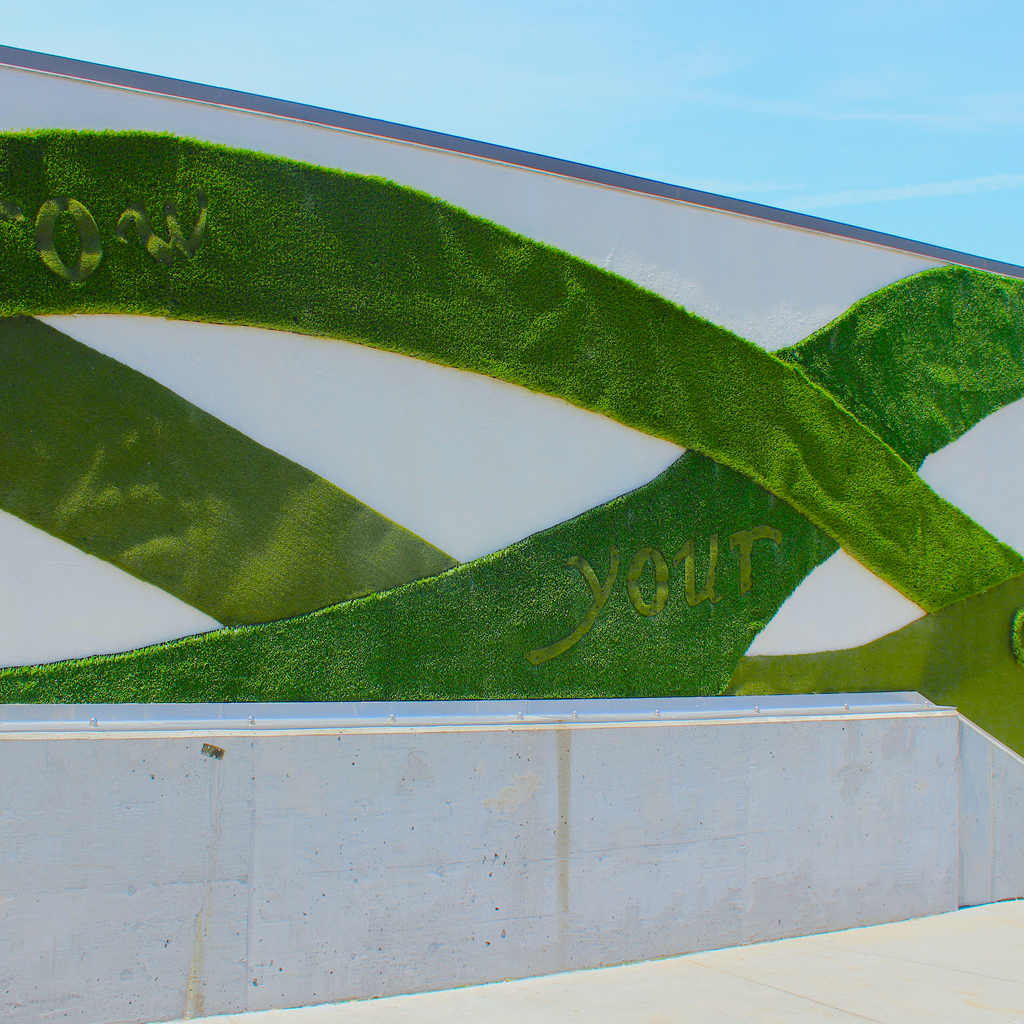
BU Academy Mural (2022)
The mural on the west-facing exterior wall of Boston University Academy by Sitarah Lakhani (BUA’22), showcases the women of the BU community, with a special nod to those in the fields of STEM, while incorporating elements of nature found nearby. Lakhani was mentored and assisted by local muralist Amanda Hill. Financial and administrative support for the mural came from Boston University Academy and the BU Arts Initiative.
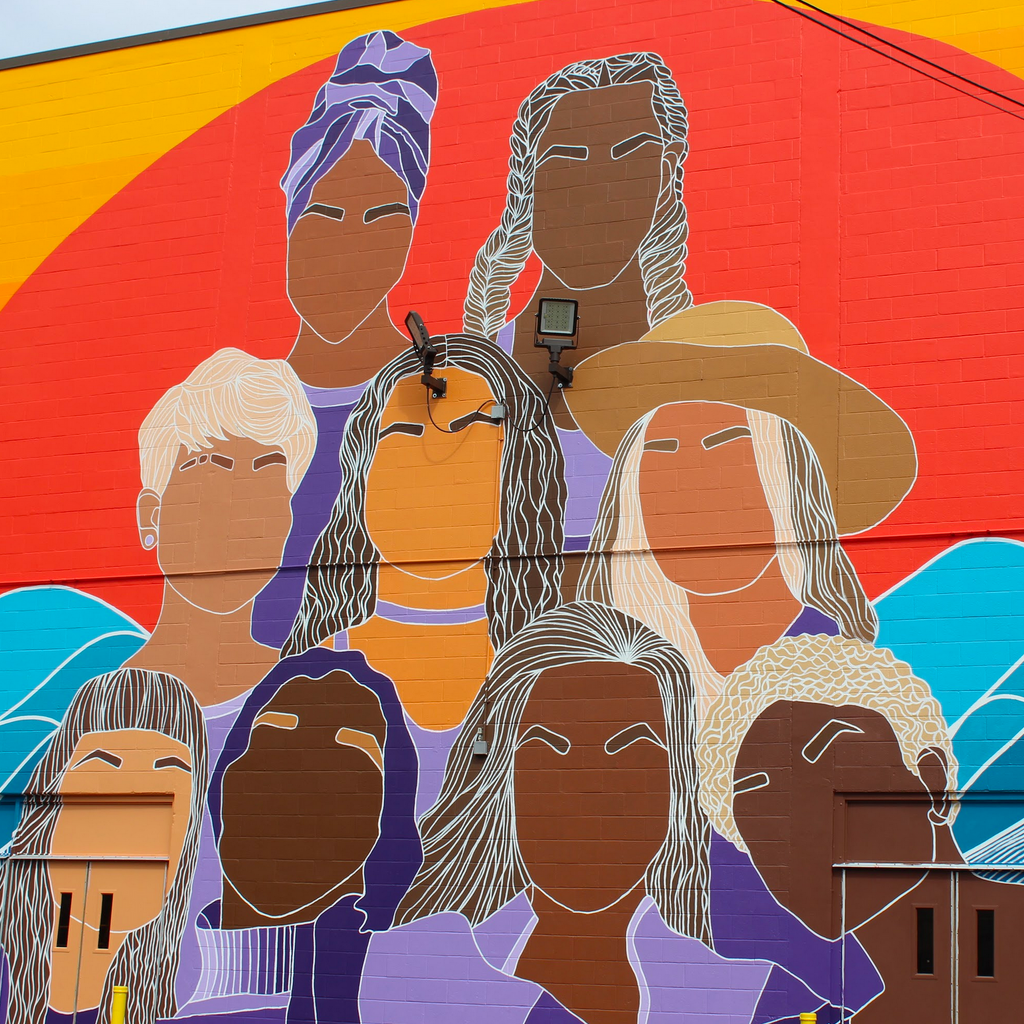
Everyday Rituals of Care: Parenting with and Beyond Cancer (2022)
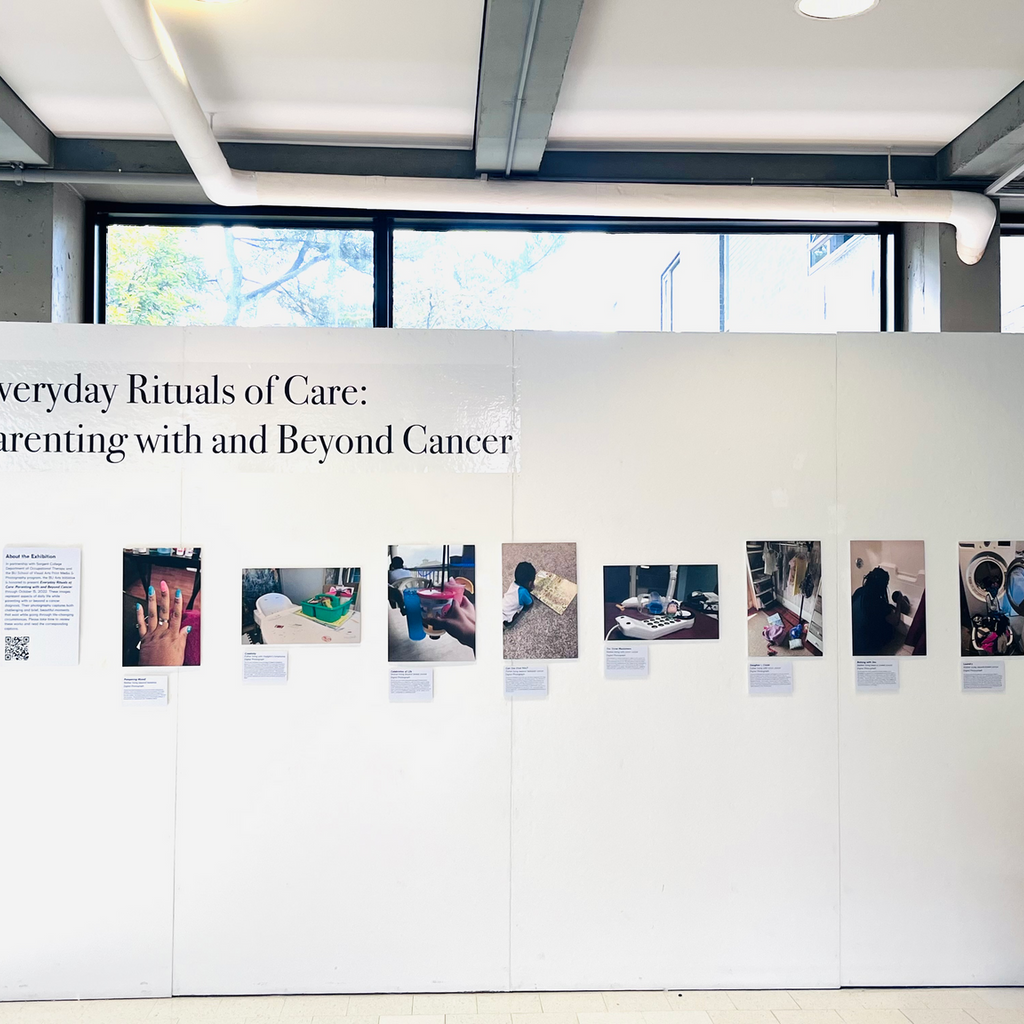
In partnership with Sargent College Department of Occupational Therapy and the BU School of Visual Arts Print Media & Photography program, the BU Arts Initiative is honored to present Everyday Rituals of Care: Parenting with and Beyond Cancer on the second-floor landing of the George Sherman Union (775 Commonwealth Ave.). This exhibition is one part of a year-long project led by Robin Newman, Clinical Associate Professor, Department of Occupational Therapy and Toni Pepe, Assistant Professor of Art, Photography during which OT students and Photography students will explore more than 100 images analyzing the image and corresponding text through both the clinical and artistic perspectives. In the Spring semester, there will be a second exhibit in the College of Fine Arts of additional works along with panel discussions on the intersection of art, medicine, and health.
These images represent aspects of daily life while parenting with or beyond a cancer diagnosis. Their photography captures the brief, beautiful moments that exist while going through life-changing circumstances.
Aftermath (2022)
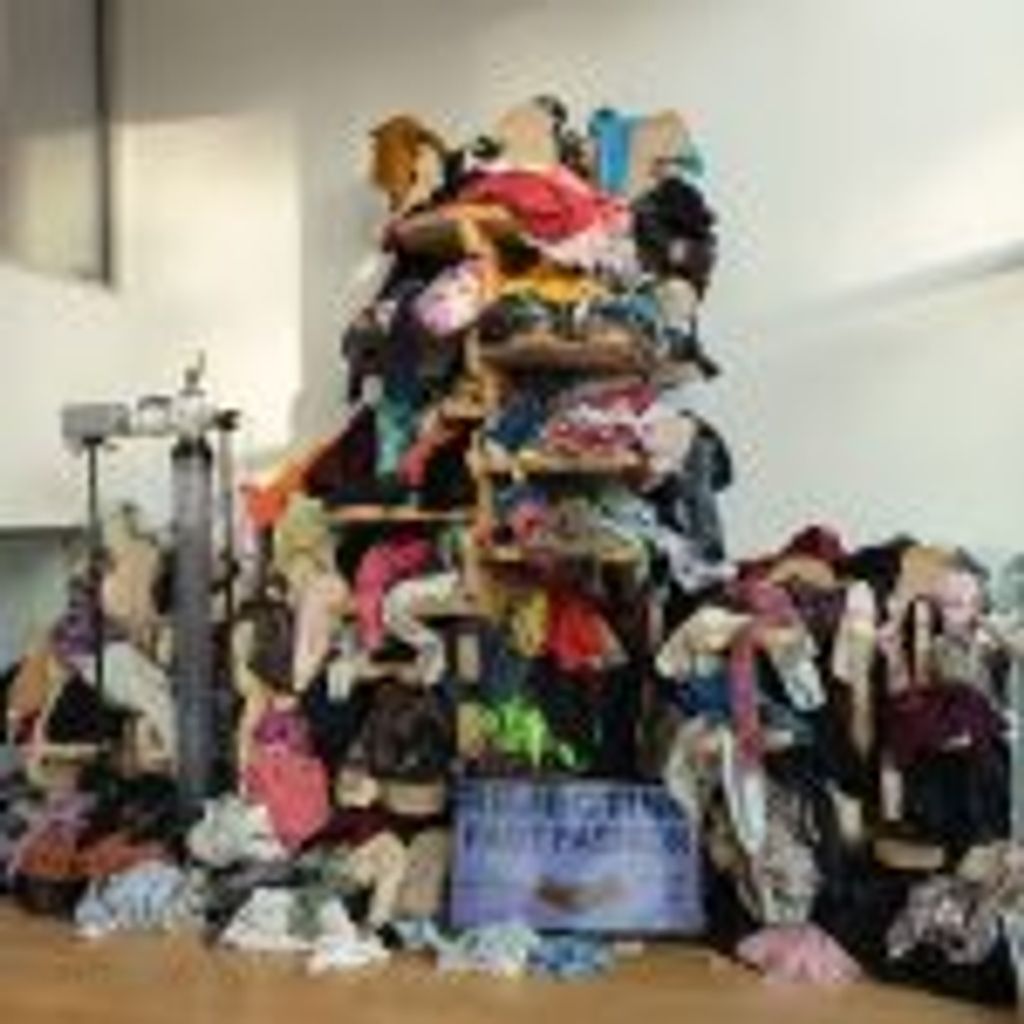
To raise awareness regarding the global issue of textile waste, the BU Arts Initiative is pleased to present Aftermath. This environmental and public health sculpture is a large-scale art advocacy installation that explores the serious impacts of textile waste. The installation includes dozens of facts about textile waste and toxicity, and a bioreactor simulation in which visitors can insert a piece of clothing and discover what toxins and gasses it releases.
The work has been on display at the Boston University School of Public Health, the McMullen Museum of Art at Boston College, and the Smithsonian Museum of American History. This immense project was developed by Dielle Lundberg, MPH (SPH’19) and Julia DeVoy, PhD, MTS,MBA alongside artist and Boston College professor Mark Cooper.
Caution: Cultural Emergency – Erin Genia (2021)

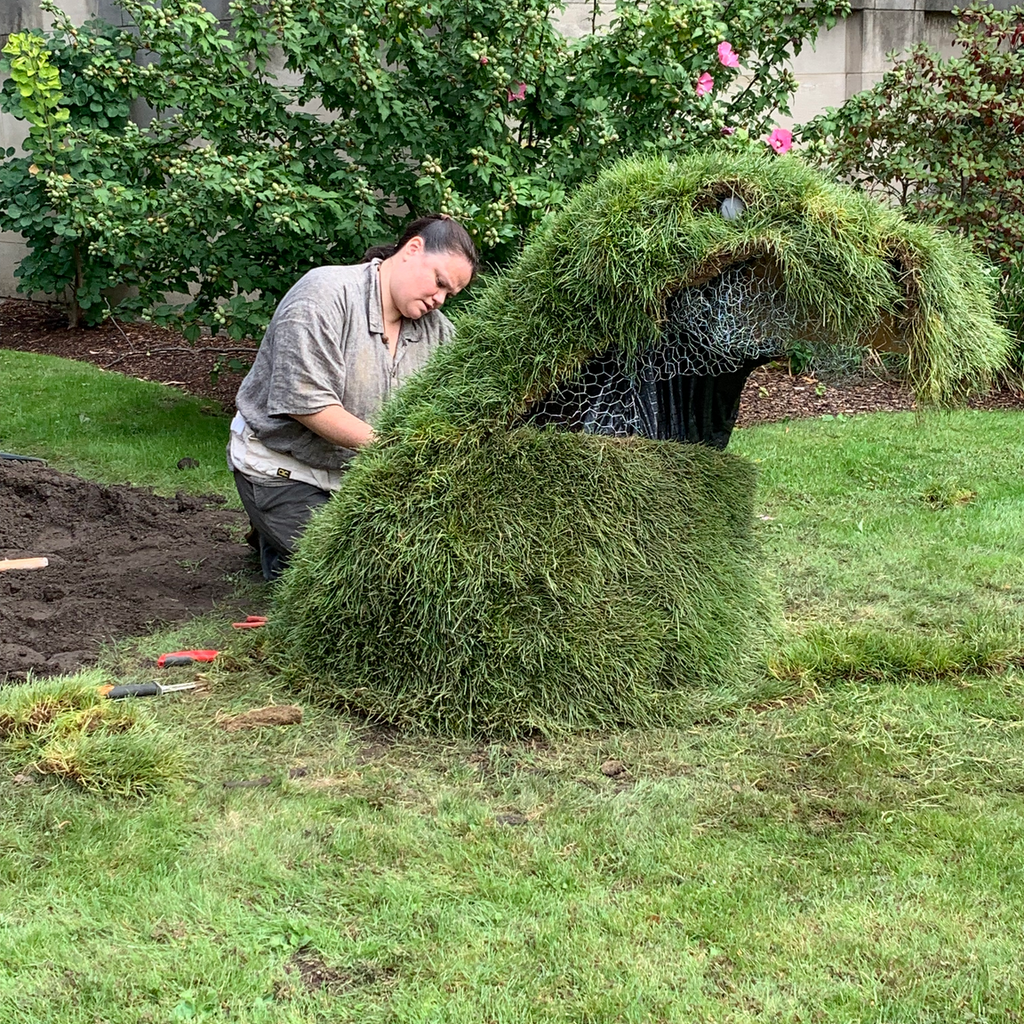

Indigenous artist Erin Genia, a member of the Sisseton-Wahpeton Oyate, comes to Boston University with an installation that explores the concept of cultural emergency, which was developed during her artist residency with the City of Boston’s Office of Emergency management. Genia created the Cultural Emergency Response framework to examine and implicate cultural roots of a vast array of interconnected and existential crises using methods and materials of emergency management, translated through a critical Dakota lens.
The installation consists of an earthen sculpture of the water monster, Unktehi, that emerges from the ground, showing the layers of fill beneath our feet, illustrating the relevance of ancient and ever-present stories that shape peoples’ relationships to land, water and life systems. A flag bearing the Morningstar, powerful Dakota iconography illustrated in fluorescent colors, flies above to draw attention to the land as a cultural emergency ground zero site.
During Boston’s rise as a colonial city, as Indigenous people were being ethnically cleansed from this land, the site Boston University occupies – a salt marsh and estuary of the Quinobequin river system – was being filled in to make way for development by settlers.
As the threat of impending sea level rise grows as climate change advances, this work explores the impacts of colonialism on the present moment. What are the harmful philosophies that drive the systems, institutions and individual behaviors of people that were set into motion by colonization? And, what can we do to address our current state of cultural emergency?
This project was supported by a Transformative Public Art grant from the City of Boston Mayor’s Office of Arts and Culture.
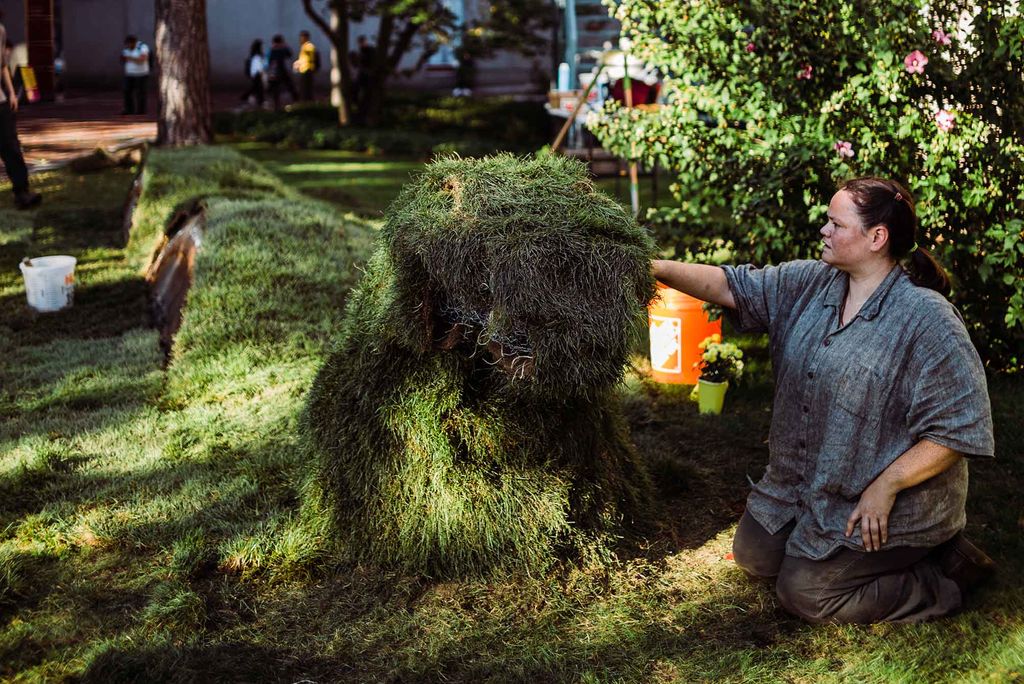
Indigenous Voices Speak Out at BU
Arts Initiative series highlights perspectives that are too often erased
Hostile Terrain 94 (2020/2021)
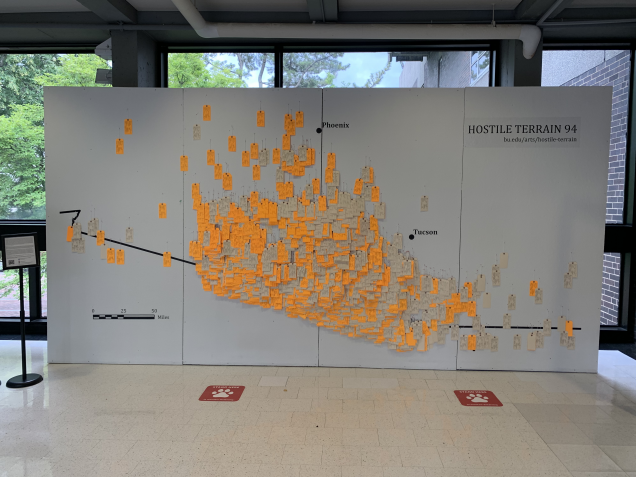

Hostile Terrain 94 (HT94) is a participatory art exhibition organized by the Undocumented Migration Project (UMP), and brought to Boston University by the College of Arts & Sciences and the BU Arts Initiative, with support from Latin American Studies, the College of General Studies, BU History Department, BU Archaeology Department, and the BU Hub. The exhibition illuminates the humanitarian crisis occurring at the United States’ border, a crisis that has claimed over 3,200 lives since the 1990s and continues to do so each and every day. The installation was on display in the George Sherman Union, 2nd Floor landing from September 3 through December 2020.
Re-Birth – Sheila Pree Bright (2020)

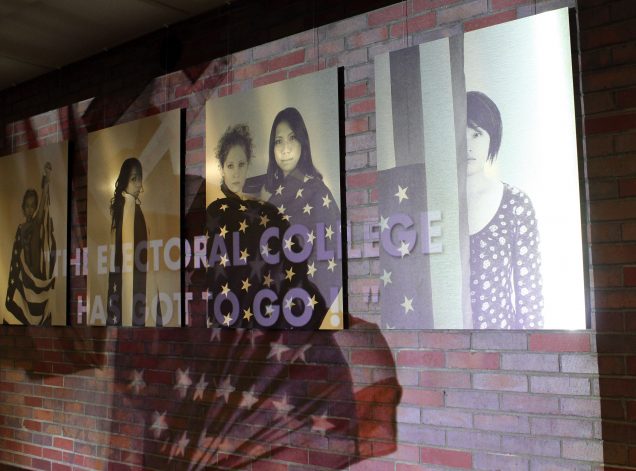
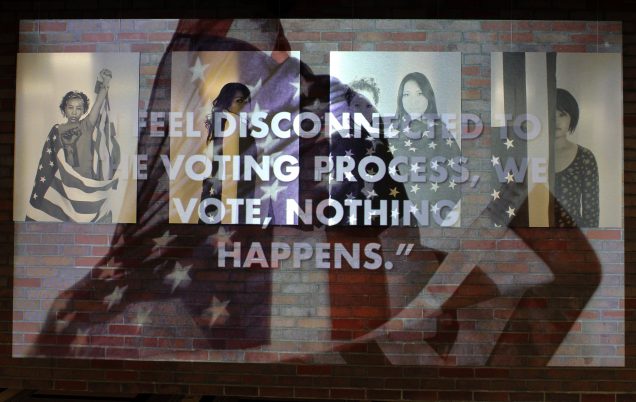
Sheila Pree Bright comes to Boston University with an installation of her work titled Re-Birth in the Boston University Mugar Memorial Library from October to December 2020. Re-Birth, timed to coincide with the 2020 presidential election, addresses themes of equity and access; particularly concepts related to the democratic process, voting rights, institutional change, racism, and equitable representation in keeping with the pedagogical mission of Boston University Libraries. This installation was conceptualized through conversations with BU community and research within the BU Libraries collections. The installation consists of oversized photographic prints of young women from Pree Bright’s 2008 series Young Americans, overlaid with video projection of text taken from archival research and Boston University student interviews.
Francisco Alarcon (2019)
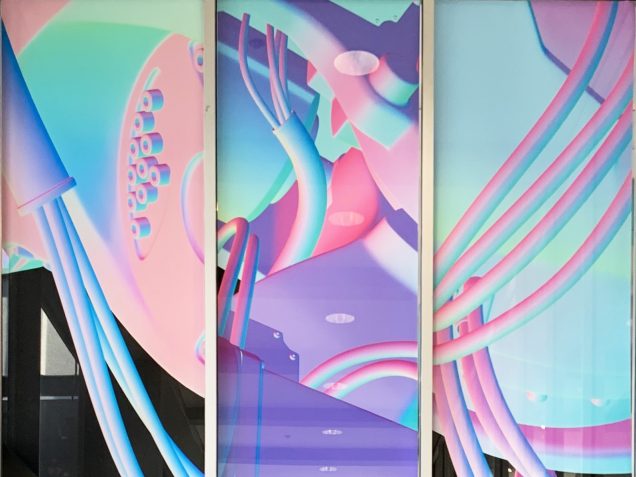


Alarcon was the 2019 Computational Artist in Residence for BU Spark!, a collaboration between the BU Arts Initiative, Rafik B. Hariri Institute for Computing and Computational Science & Engineering, BU Spark!, Innovate@BU, School of Visual Arts, and the College of Fine Arts. The residency was immersive, providing opportunities for both faculty and students to explore the creative process with and around computational science. Alarcon is a practicing artist, and has been trained in both architecture and as a civil engineer. During his residency, Alarcon’s work could be temporarily found in the George Sherman Union, the Hariri Institute, and in the Rajen Kilichand Center for Integrated Life Sciences & Engineering Lobby. Learn more about Alarcon’s residency here.
FDA Spoon – Domenic Esposito (2019)

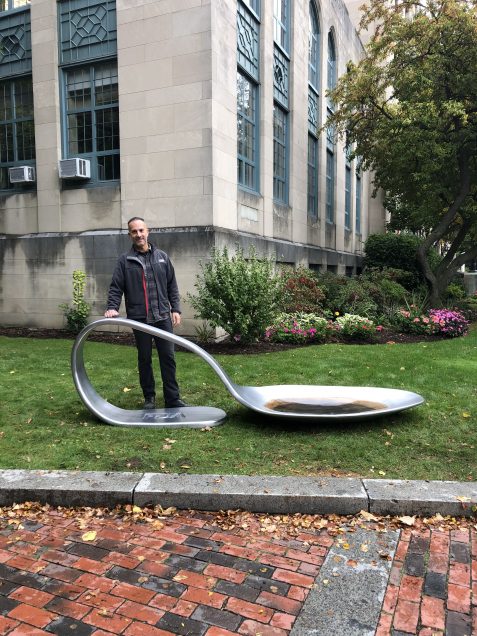

FDA Spoon is one of four spoons created by Esposito, an artist and activist, as a protest intended to bring awareness to the opioid epidemic and spur accountability among doctors and pharmaceutical companies who manufacture and prescribe the drug. Since first installing the initial spoon (Purdue Spoon) in June 2018 in front of Purdue Pharma in Stamford, CT, he has produced new editions of the sculpture. The FDA Spoon, which was on view on BU’s George Sherman Union Plaza, was first placed in front of the headquarters of the Food and Drug Administration in Washington, DC, as part of a larger protest in April 2019 against what opioid activists perceive to be government inaction. This was the sculpture’s first installation on a university campus and was installed at BU from October 12th to 24th, 2019. You can learn more about bringing the FDA Spoon to campus here.
The Opioid Spoon Project at Boston University was initiated by Gregory Williams, Associate Professor, Department of History of Art & Architecture, to coincide with his Fall History of Art & Architecture course, “Contemporary Art, Politics, and Activism.”
Florian Dombois (2013)

For four nights in October 2013, a laser installation titled uboc No. 1 & stuVi2 connected Boston University’s Law Tower to the student residence Student Village 2, or stuVi2. German artist Florian Dombois created the installation for nonprofit TransCultural Exchange’s Conference on International Opportunities in the Arts: Engaging Minds. The laser not only connected the two towers, but functioned as a range finder, which measured the distance — the architectural and geophysical dialog — between the two, and in real time, project their movements onto a small screen.
Florian Dombois studied geophysics and philosophy in Berlin, Kiel, and Hawaii. He founded the “Institute Y” for transdisciplinary exchange between the arts and research and teaching. He has served as a professor at the Zürich University of the Arts in Switzerland since 2011. He has shown widely nationally and internationally, including at the Kunsthall Bern, Kunstmuseum Bern, Bünder Kunstmuseum Chur, ZKM Karlsruhe, Museum Ludwig Koblenz, Fundació Suñol Barcelona, Riga Art Space, and CIC Cairo. He received the German Sound Art Prize in 2010 and 1st Place Kunst am Bau, Kantonsspital Winterthur in 2015.
Alexander Golob (2013)
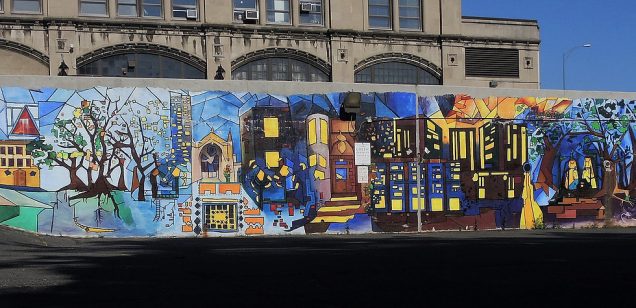
The title of Alexander Golob’s (CFA’16) mural, Kaleidoscope, can be seen as a tool– a way of viewing BU’s campus. Through its use of angular, faceting shapes and wide-ranging colors, the work depicts easy to recognize buildings and landmarks from BU’s campus along Commonwealth Avenue. The mural, located in the parking lot of 855 Commonwealth Avenue at the College of Fine Arts, was co-sponsored by the BU Arts initiative. Public input was a part of the mural’s conception, with community meetings and student government playing a role in the work’s proposal and execution.

Exploring & Examining Public Art
Want more? Dive deep into stories and works of public art at BU and far beyond.
